27 Case Study Examples Every Marketer Should See
Updated: September 05, 2024
Published: August 13, 2018
Putting together a compelling case study is one of the most powerful strategies for showcasing your product and attracting future customers. But it's not easy to create case studies that your audience can’t wait to read.

In this post, I’ll go over the definition of a case study and the best examples to inspire you.
Table of Contents

What is a case study?
Marketing case study examples, digital marketing case study examples.

Free Case Study Templates
Showcase your company's success using these three free case study templates.
- Data-Driven Case Study Template
- Product-Specific Case Study Template
- General Case Study Template
Download Free
All fields are required.
You're all set!
Click this link to access this resource at any time.
A case study is a detailed story of something your company did. It includes a beginning — often discussing a challenge, an explanation of what happened next, and a resolution that explains how the company solved or improved on something.
A case study proves how your product has helped other companies by demonstrating real-life results. Not only that, but marketing case studies with solutions typically contain quotes from the customer.
This means that they’re not just ads where you praise your own product. Rather, other companies are praising your company — and there’s no stronger marketing material than a verbal recommendation or testimonial.
A great case study also has research and stats to back up points made about a project's results.
There are several ways to use case studies in your marketing strategy.
From featuring them on your website to including them in a sales presentation, a case study is a strong, persuasive tool that shows customers why they should work with you — straight from another customer.
Writing one from scratch is hard, though, which is why we’ve created a collection of case study templates for you to get started.
There’s no better way to generate more leads than by writing case studies . However, without case study examples from which to draw inspiration, it can be difficult to write impactful studies that convince visitors to submit a form.
To help you create an attractive and high-converting case study, we've put together a list of some of our favorites. This list includes famous case studies in marketing, technology, and business.
These studies can show you how to frame your company's offers in a way that is useful to your audience. So, look, and let these examples inspire your next brilliant case study design.
These marketing case studies with solutions show the value proposition of each product. They also show how each company benefited in both the short and long term using quantitative data.
In other words, you don’t get just nice statements, like “this company helped us a lot.” You see actual change within the firm through numbers and figures.
You can put your learnings into action with HubSpot's Free Case Study Templates . Available as custom designs and text-based documents, you can upload these templates to your CMS or send them to prospects as you see fit.
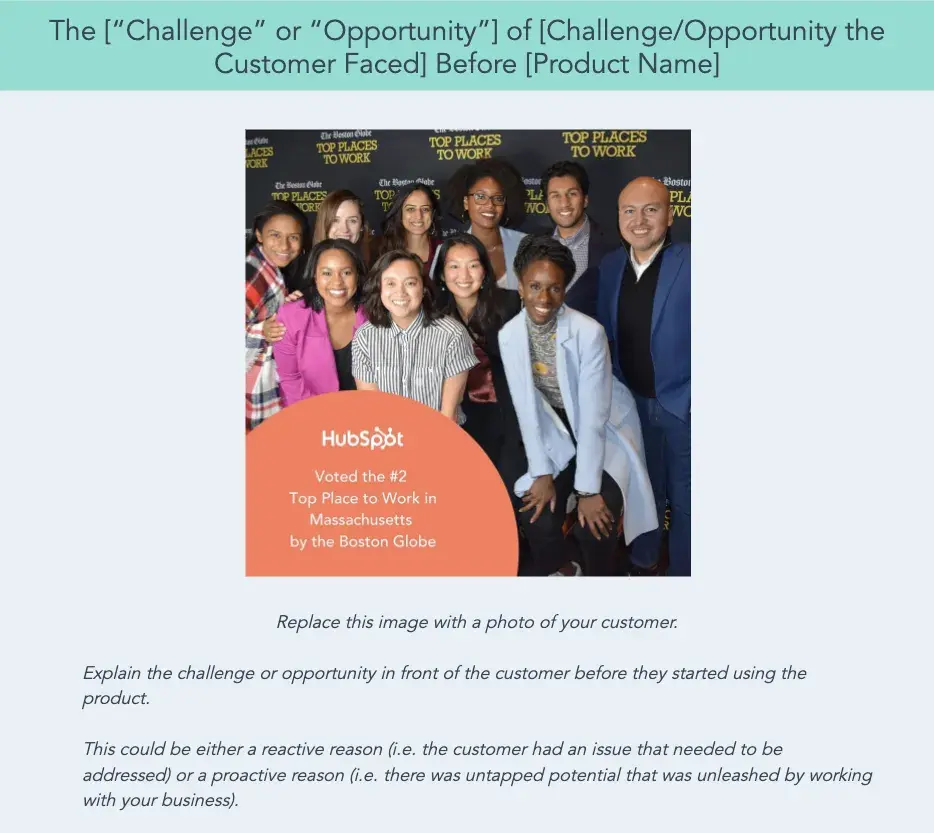
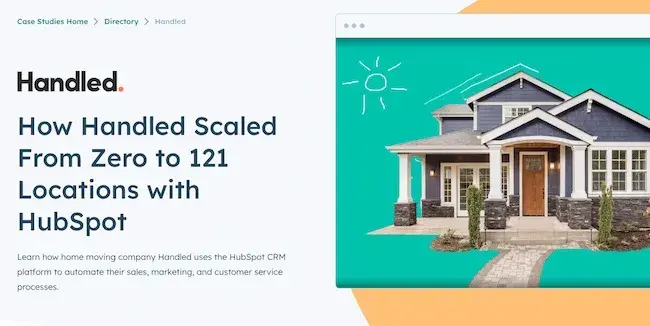
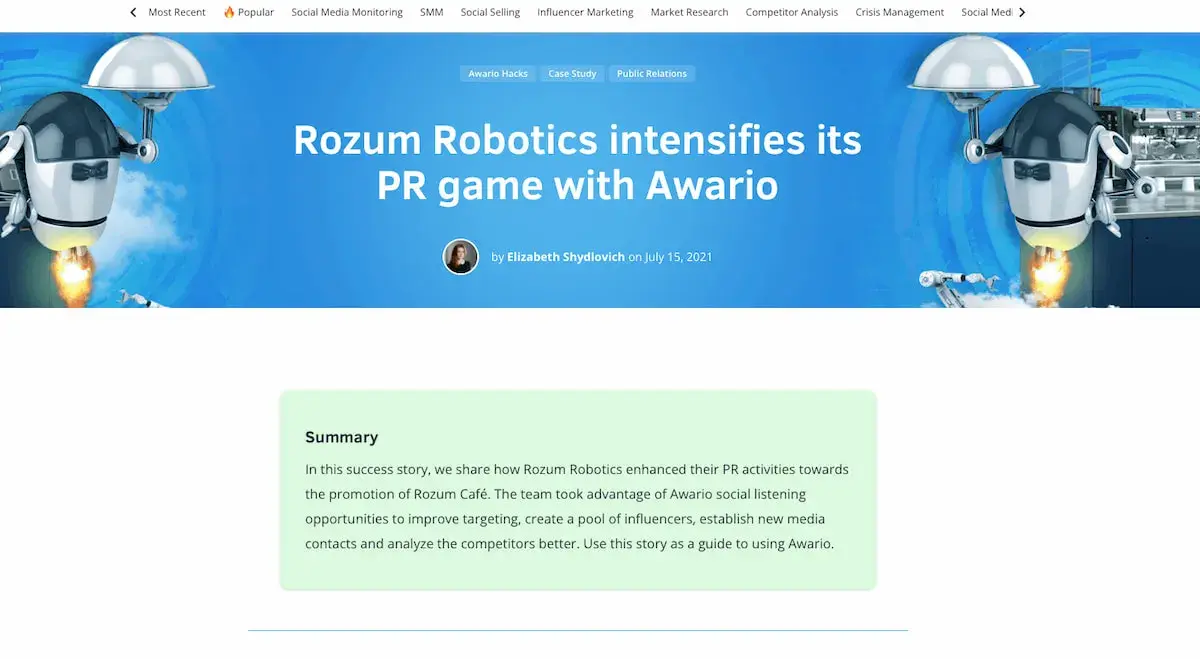
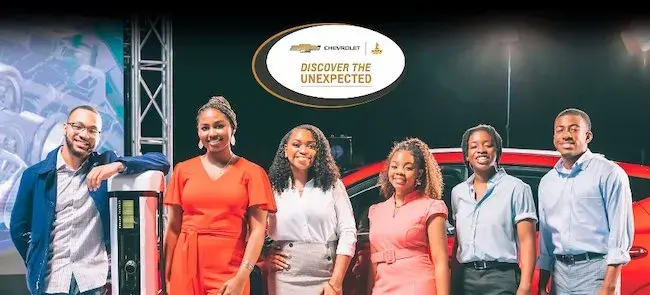
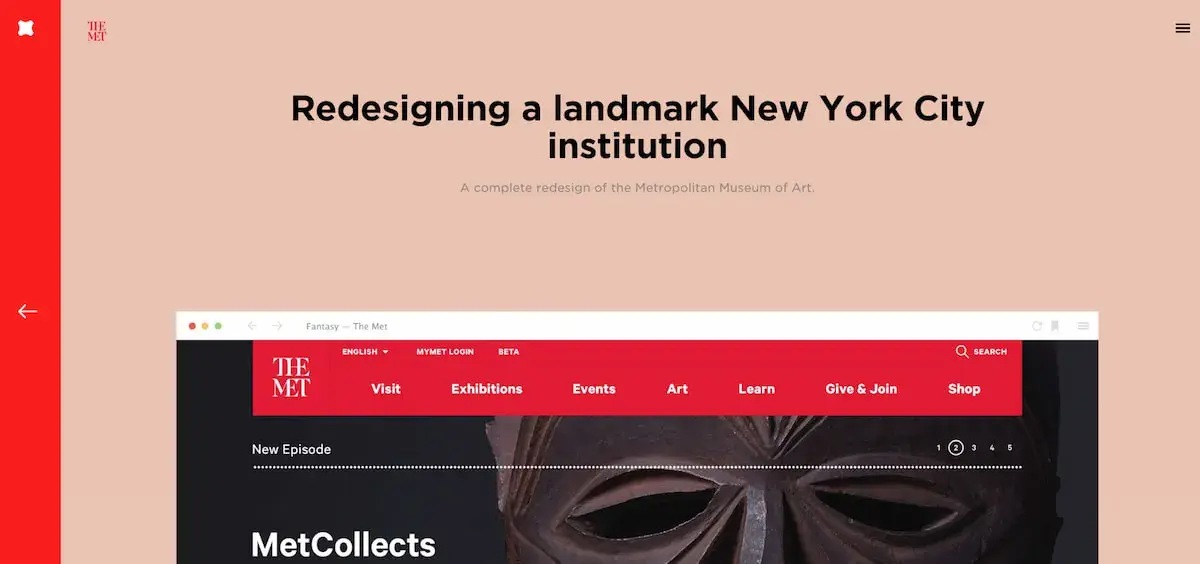
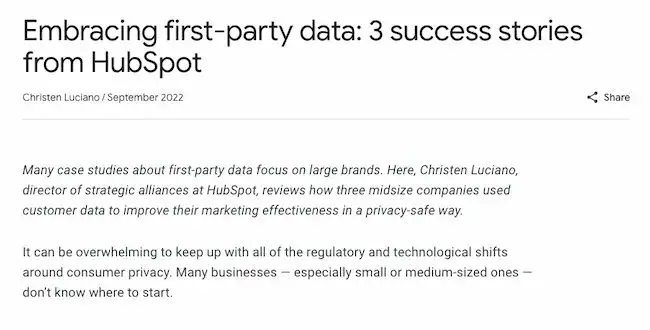

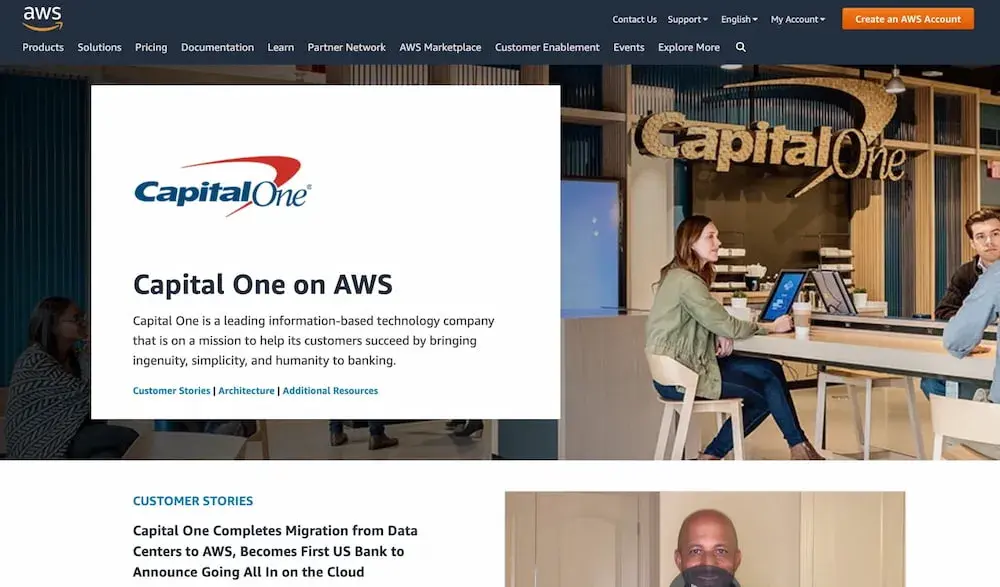
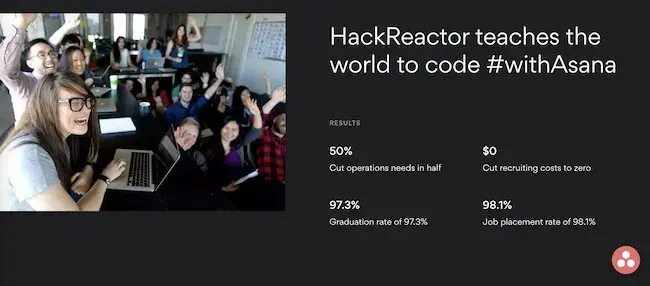
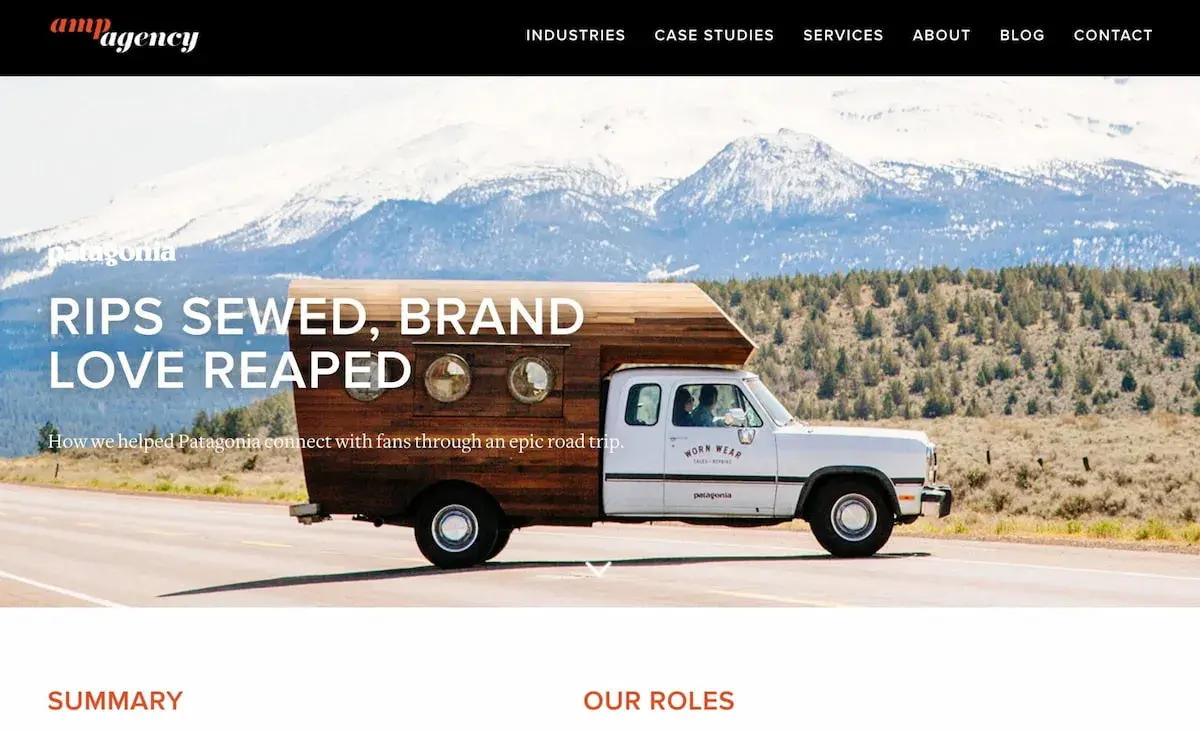
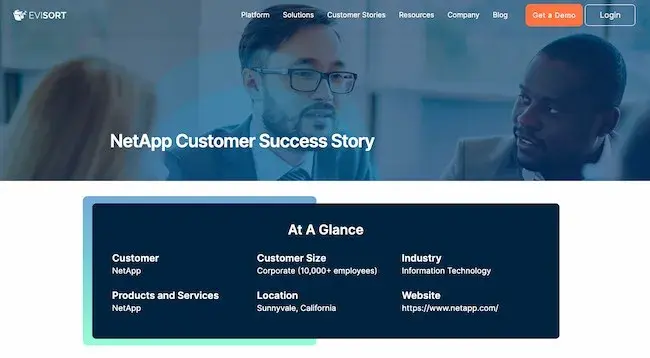
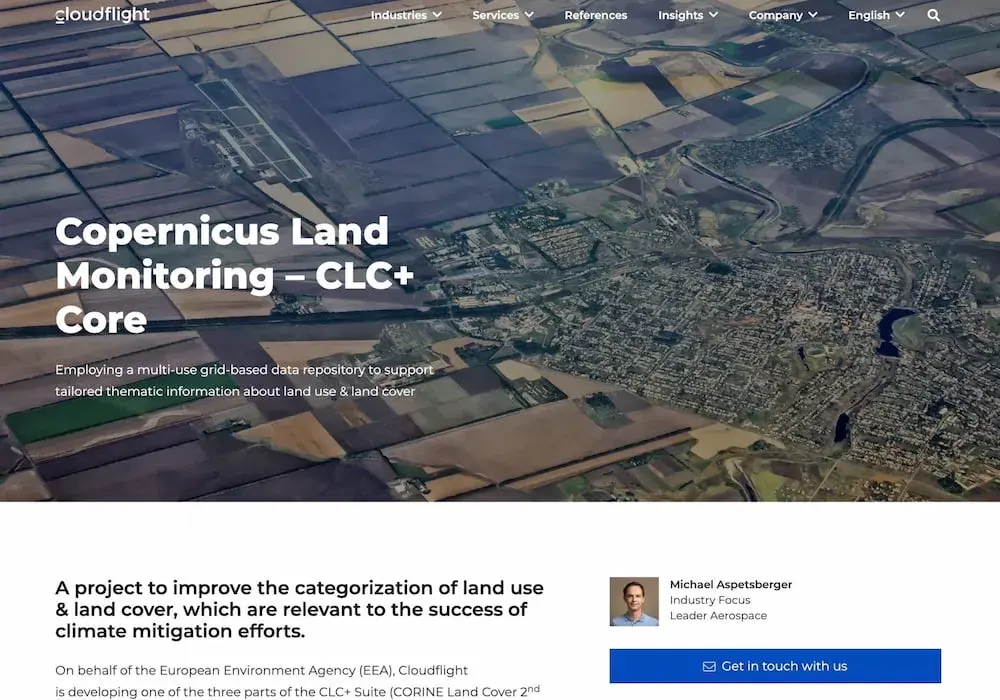
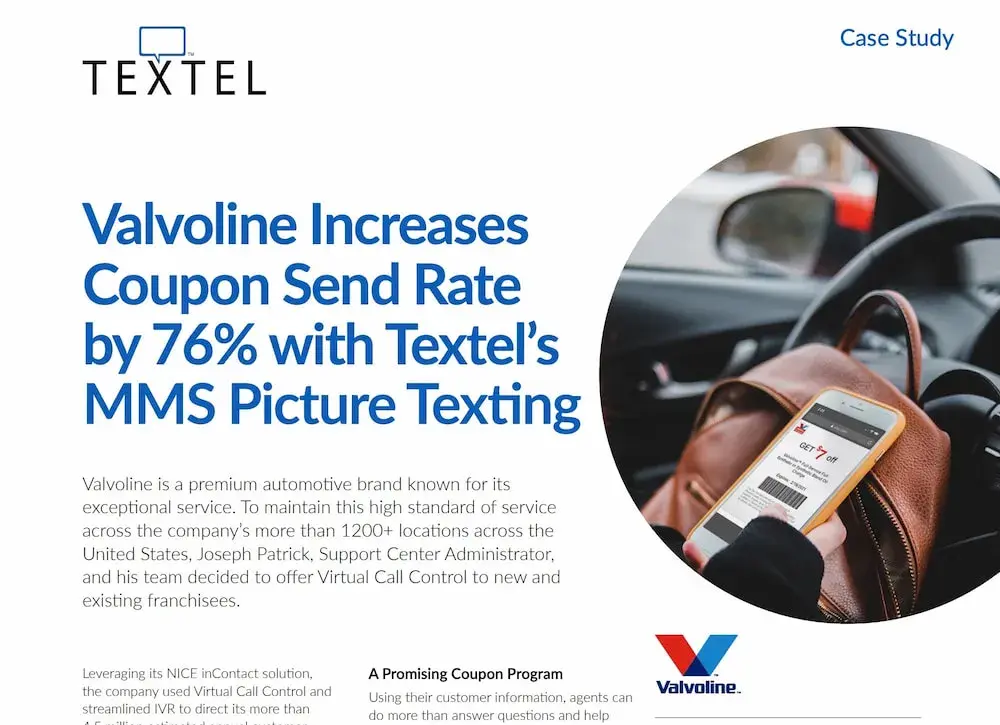
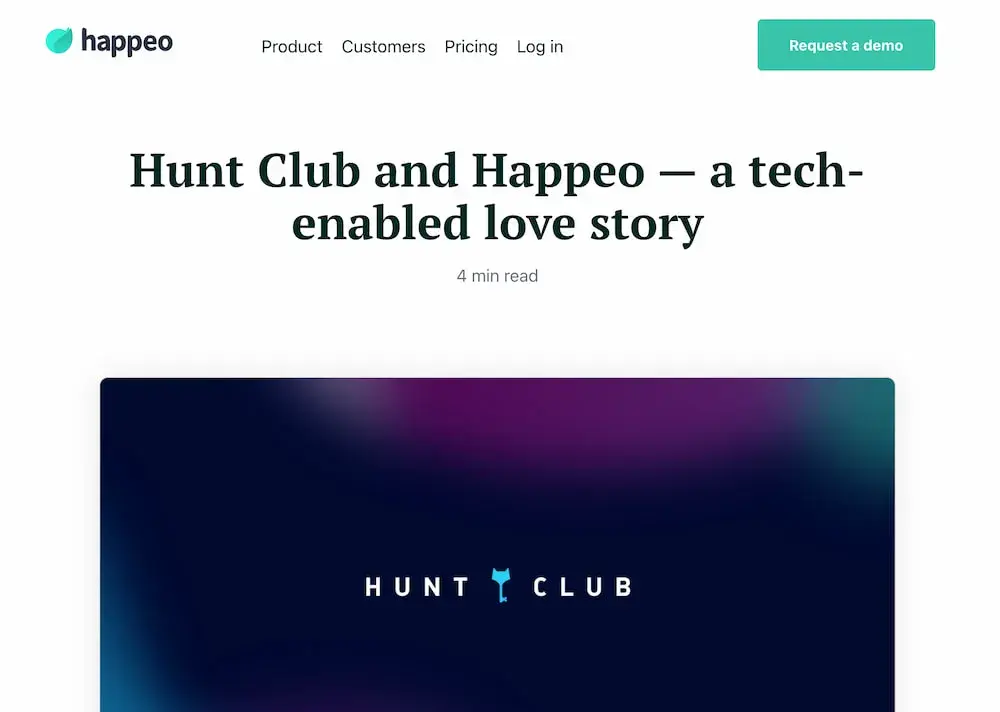
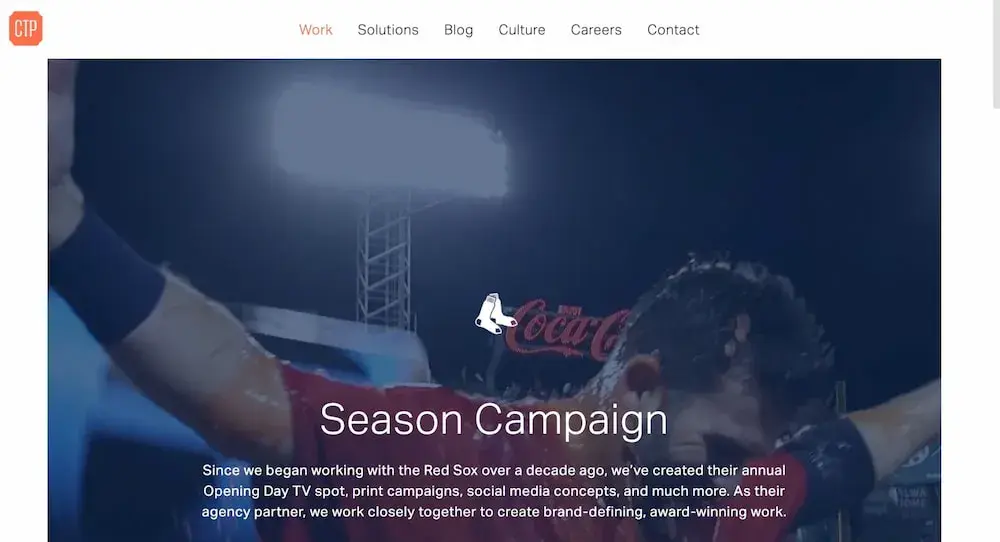
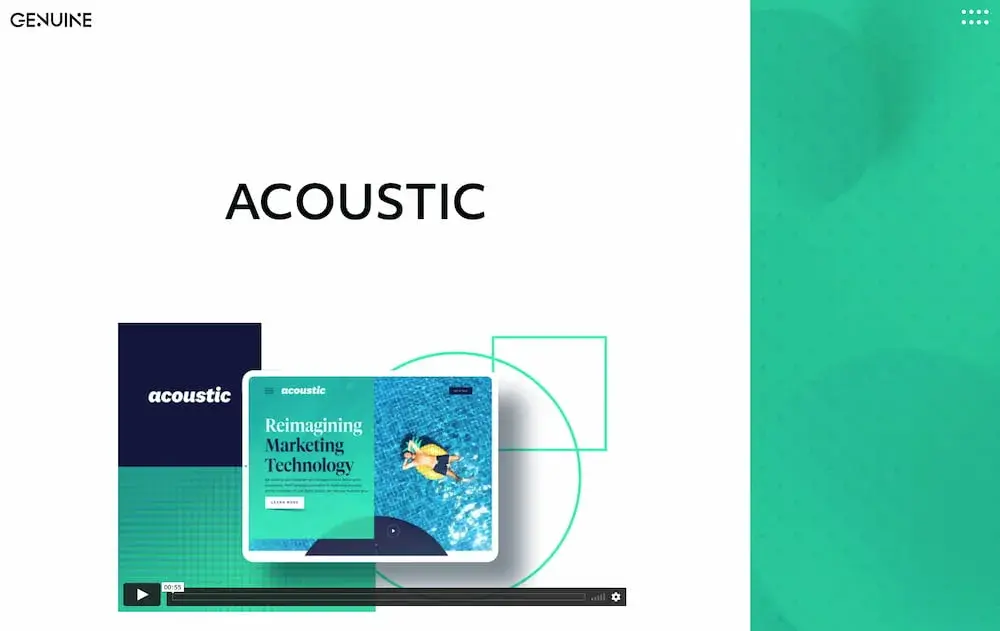
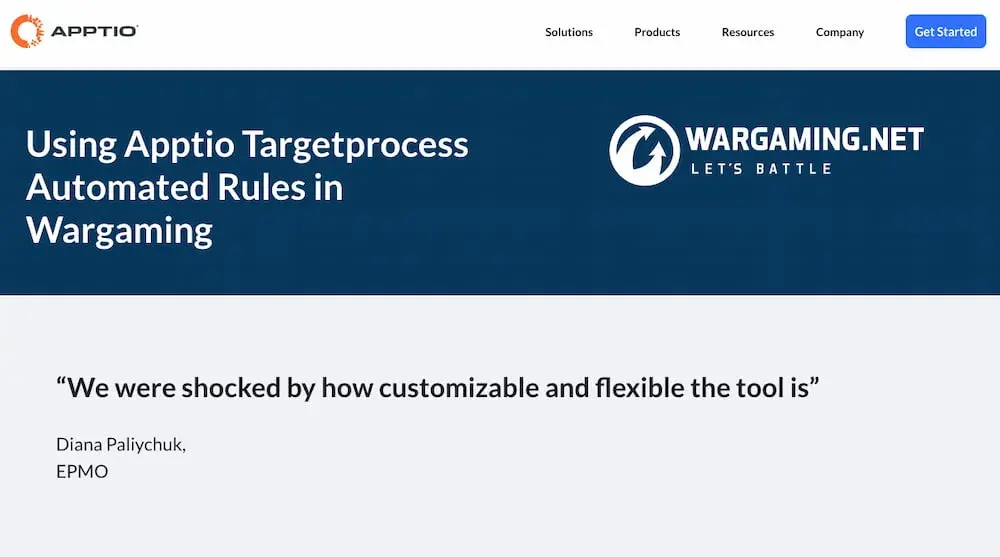
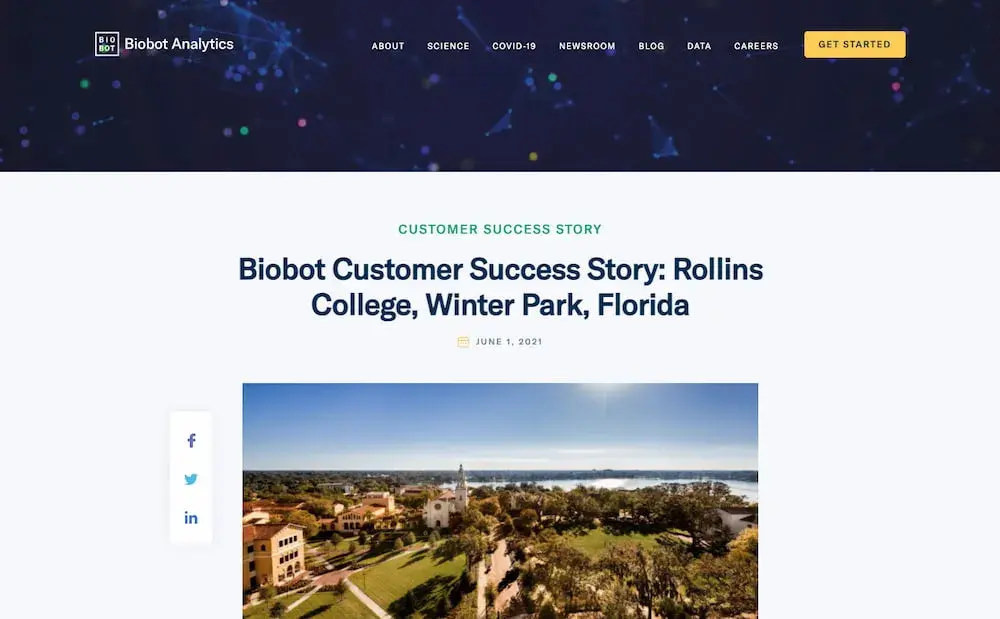
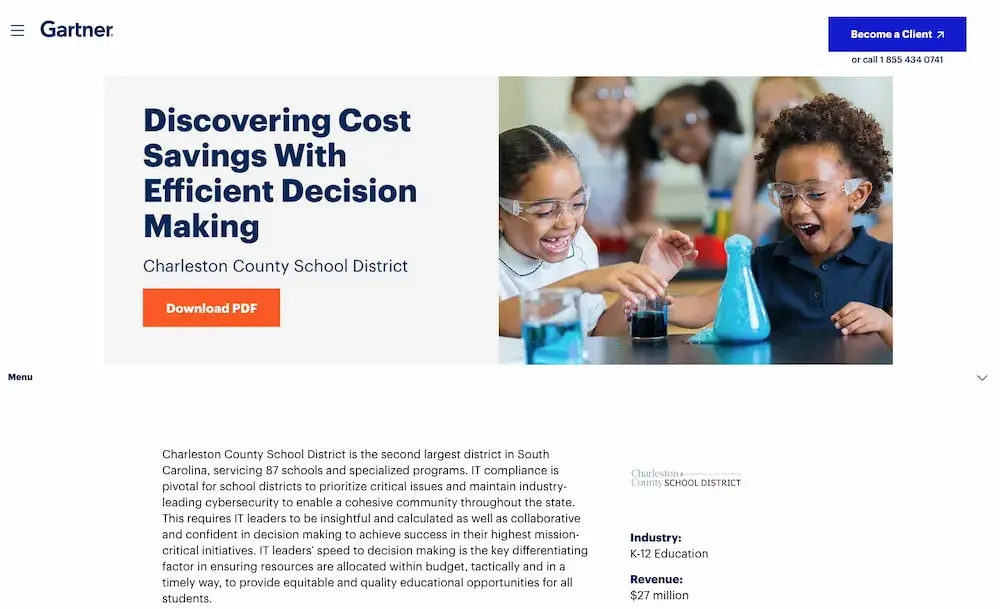
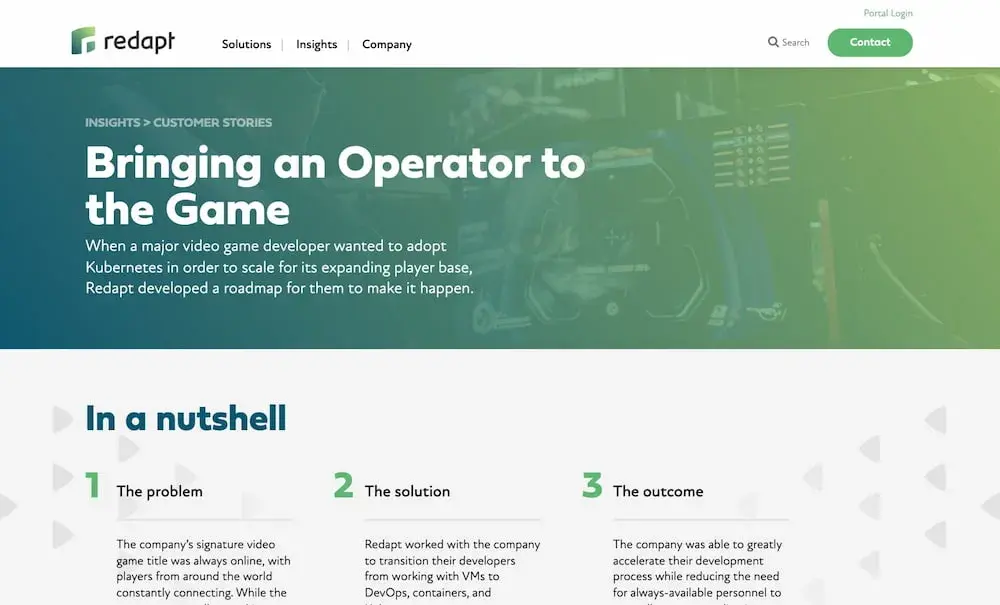
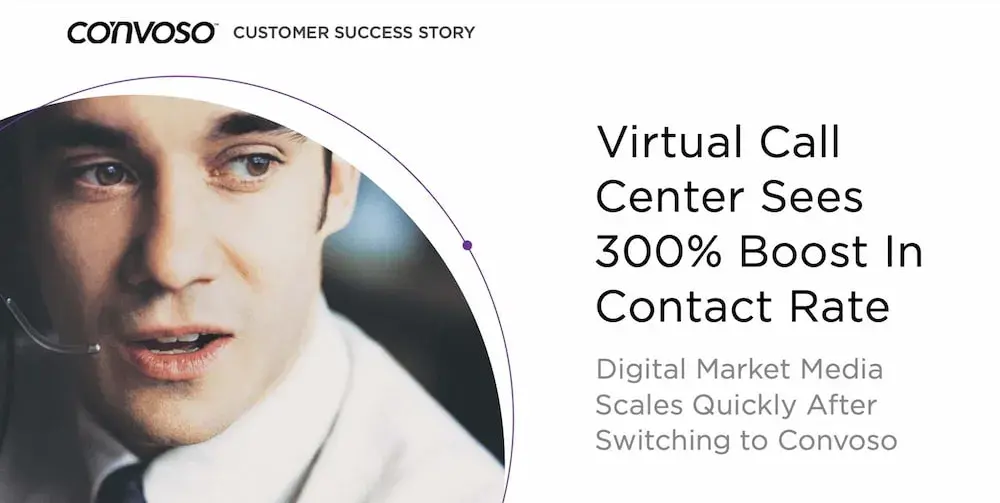
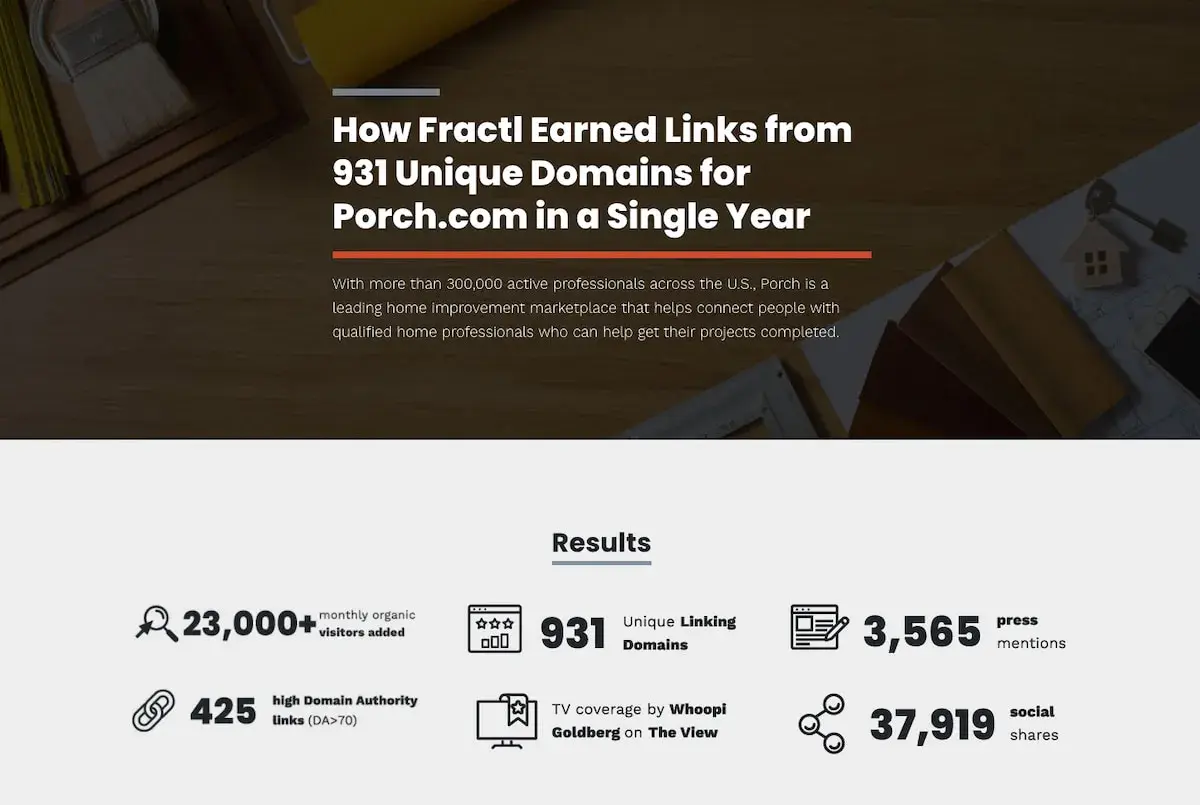
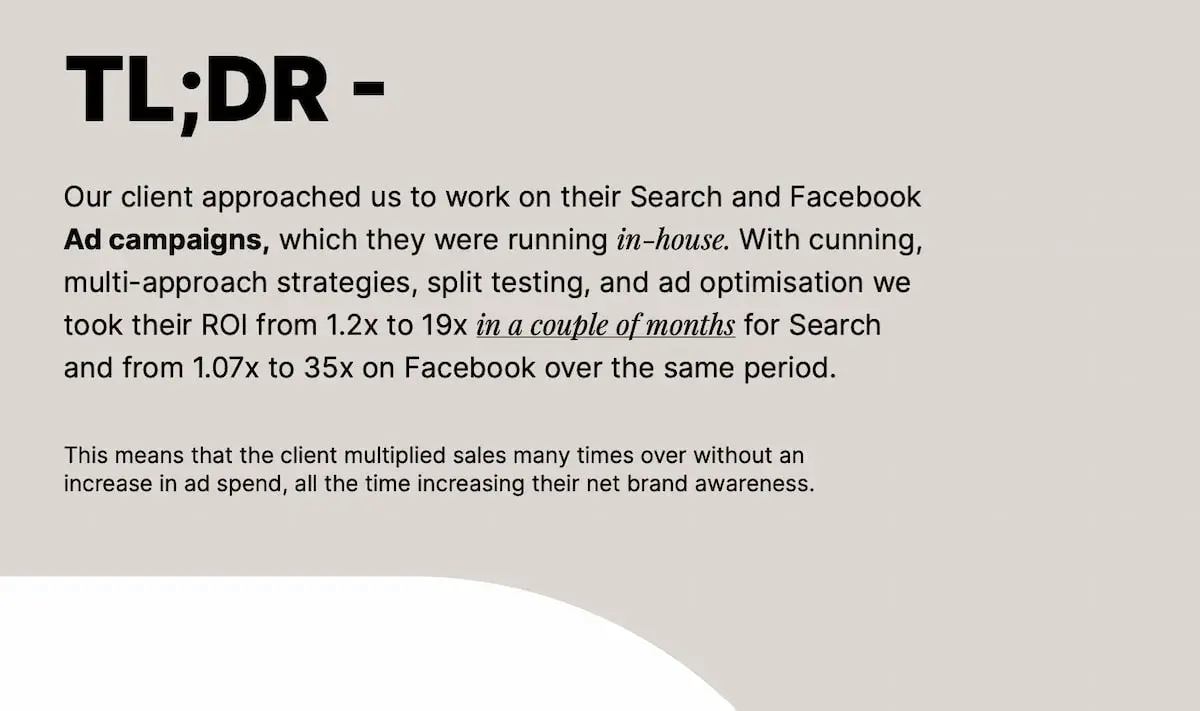
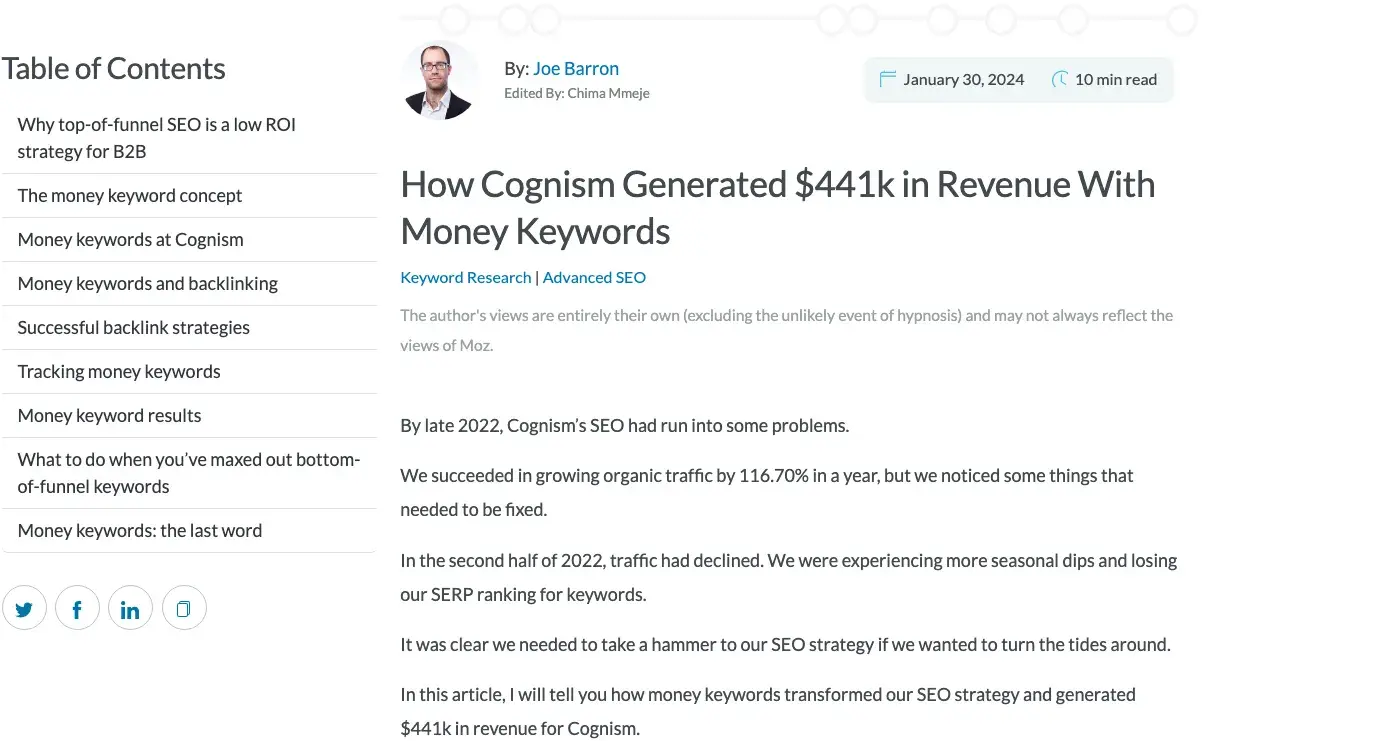
How to Write a Case Study: Bookmarkable Guide & Template
![case study marketing strategy 7 Pieces of Content Your Audience Really Wants to See [New Data]](https://knowledge.hubspot.com/hubfs/contenttypes.webp)
7 Pieces of Content Your Audience Really Wants to See [New Data]

How to Market an Ebook: 21 Ways to Promote Your Content Offers
![case study marketing strategy How to Write a Listicle [+ Examples and Ideas]](https://www.hubspot.com/hubfs/listicle-1.jpg)
How to Write a Listicle [+ Examples and Ideas]
![case study marketing strategy What Is a White Paper? [FAQs]](https://53.fs1.hubspotusercontent-na1.net/hubfs/53/business%20whitepaper.jpg)
What Is a White Paper? [FAQs]

What is an Advertorial? 8 Examples to Help You Write One

How to Create Marketing Offers That Don't Fall Flat

20 Creative Ways To Repurpose Content

16 Important Ways to Use Case Studies in Your Marketing

11 Ways to Make Your Blog Post Interactive
Showcase your company's success using these free case study templates.
The weekly email to help take your career to the next level. No fluff, only first-hand expert advice & useful marketing trends.
Must enter a valid email
We're committed to your privacy. HubSpot uses the information you provide to us to contact you about our relevant content, products, and services. You may unsubscribe from these communications at any time. For more information, check out our privacy policy .
This form is protected by reCAPTCHA and the Google Privacy Policy and Terms of Service apply.
You've been subscribed

02 Apr 35 TOP MARKETING CASE STUDIES
In the dynamic world of marketing, success often hinges on innovation, creativity, and strategic thinking. While theories and concepts provide a foundation, it’s the real-world applications and success stories that truly inspire and inform marketers around the globe. Marketing case studies offer invaluable insights into the strategies, tactics, and campaigns that have propelled brands to new heights, showcasing the power of creativity, data-driven decision-making, and consumer-centric approaches.
From iconic brand revitalizations to groundbreaking digital campaigns, marketing case studies provide a window into the minds of industry leaders and innovators. These stories not only celebrate achievements but also offer valuable lessons and inspiration for marketers seeking to navigate the ever-evolving landscape of consumer behavior, technology, and competition.
In this comprehensive guide, we delve into 35 top marketing case studies from various industries and sectors. Each case study highlights the exceptional strategies, tactics, and executions that set them apart and contributed to their success. From timeless classics to modern-day triumphs, these case studies offer a roadmap for marketers looking to make their mark and drive results in an increasingly competitive marketplace.
Join us as we explore the stories behind some of the most iconic and influential marketing case studies of all time. From Coca-Cola’s innovative storytelling to Airbnb’s disruptive brand building, these case studies exemplify the ingenuity, adaptability, and creativity that define exceptional marketing in the 21st century.
Get ready to be inspired, informed, and empowered as we uncover the secrets behind the success of these 35 top marketing case studies. Whether you’re a seasoned marketer seeking fresh ideas or a budding enthusiast eager to learn, this journey promises to be enlightening and enriching. So, without further ado, let’s dive into the world of marketing excellence and discover what makes these case studies truly exceptional.
35 Top Marketing Case Studies and What Makes Them Exceptional
1. BEN & JERRY’S “PINT SLICE SOCIAL” MARKETING CASE STUDY
2. BLENDECT’S “WILL IT BLEND?” MARKETING CASE STUDY
3. RED BULL’s STRATOS JUMP MARKETING CASE STUDY
4. BUDWEISER’S “WHASSUP?” MARKETING CASE STUDY
5. OLD SPICE’S “THE MAN YOUR MAN COULD SMELL LIKE” MARKETING CASE STUDY
6. PEPSI: “IS PEPSI OK?” MARKETING CASE STUDY
7. APPLE’S “THINK DIFFERENT” MARKETING CASE STUDY
8. COCA COLA’S “SHARE A COKE” MARKETING CASE STUDY
9. NIKE’S “JUST DO IT” MARKETING CASE STUDY
10. APPLE’S “1984” MARKETING CASE STUDY
11. AXE’S “FIND YOUR MAGIC” MARKETING CASE STUDY
12. BURGER KING’S “RECLAIM THE FLAME” MARKETING CASE STUDY
13. GUINNESS’S “SURFER” MARKETING CASE STUDY
14. MCDONALD’S “I’M LOVIN’ IT” MARKETING CASE STUDY
15. AIRBNB’S “LIVE THERE” MARKETING CASE STUDY
16. LAY’S “DO US A FLAVOR” MARKETING CASE STUDY
17. AMAZON’S “AMAZON PRIME” MARKETING CASE STUDY
18. GOPRO’S “BE A HERO” MARKETING CASE STUDY
19. VOLVO TRUCKS’ “THE EPIC SPLIT” MARKETING CASE STUDY
20. DOVE’S “REAL BEAUTY SKETCHES” MARKETING CASE STUDY
21. SPOTIFY’S “WRAPPED” MARKETING CASE STUDY
22. ICELAND’S GROCERIES MARKETING CASE STUDY
23. HEALTH-ADE’S MARKETING CASE STUDY
24. ALWAYS’ “LIKE A GIRL” MARKETING CASE STUDY
25. COCA-COLA’S “SMALL WORLD MACHINES” MARKETING CASE STUDY
26. BURGER KING’S “WHOPPER DETOUR” MARKETING CASE STUDY
27. AMAZON’S PRIME DAY MARKETING CASE STUDY
28. MCDONALD’S “OUR FOOD, YOUR QUESTIONS” MARKETING CASE STUDY
29. AIRBNB’S “EXPERIENCES” LAUNCH MARKETING CASE STUDY
30. PIZZA HUT’S “HUT REWARDS” LOYALTY PROGRAM MARKETING CASE STUDY
31. BMW’S “THE ULTIMATE DRIVING MACHINE” MARKETING CASE STUDY
32. THE MOST INTEREST MAN IN THE WORLD MARKETING CASE STUDY
33. APPLE’S “GET A MAC” MARKETING CASE STUDY
34. PROCTER AND GAMBLE’S “THANK YOU, MOM” MARKETING CASE STUDY
35. METRO TRAINS “DUMB WAYS TO DIE” MARKETING CASE STUDY
What is a Marketing Case Study?
A marketing case study is a detailed examination of a specific marketing strategy, campaign, or initiative that showcases its implementation, outcomes, and impact on business objectives. It typically includes a comprehensive analysis of the target audience, market conditions, competitive landscape, marketing tactics used, and the results achieved.
In a marketing case study, key components often include the background information to set the context, such as the company’s industry, size, and goals; the challenges or opportunities that led to the marketing initiative; the strategy or approach employed, including the marketing channels, messaging, and creative elements; the execution and implementation phase; and the measurable outcomes, such as increased sales, brand awareness, customer engagement, or other relevant metrics. Additionally, a well-crafted marketing case study may also highlight lessons learned, best practices, and recommendations for future marketing efforts based on the experience and results of the case study.
What Does a Marketing Case Study Consist of?
A marketing case study typically consists of several key elements that provide a comprehensive view of a marketing initiative’s success or failure.
Firstly, it includes a detailed description of the company or brand involved, including its industry, target market, and business objectives. This sets the context for the marketing campaign or strategy being studied.
Secondly, the case study outlines the specific marketing challenge or opportunity that prompted the initiative. This could be anything from entering a new market segment to revamping an existing product’s branding. Understanding the initial problem or goal helps readers grasp the significance of the marketing efforts undertaken.
Thirdly, the case study delves into the strategy and tactics employed to address the challenge or opportunity. This includes details such as the chosen marketing channels (e.g., digital, traditional, social media), messaging, creative assets, budget allocation, and timeline. The rationale behind these decisions and how they align with the company’s overall marketing strategy are typically discussed.
Additionally, a marketing case study often includes measurable outcomes and results. This can encompass various metrics such as increased sales, brand awareness, customer engagement, return on investment (ROI), and market share growth. Data-driven insights and analysis are crucial here, as they demonstrate the effectiveness and impact of the marketing efforts on achieving the stated objectives.
Lastly, a well-rounded marketing case study may also include lessons learned, challenges faced, and recommendations for future strategies based on the experiences and insights gained from the case study. This adds depth and practical value to the document, making it not just a retrospective analysis but also a learning tool for marketers and businesses looking to optimize their marketing efforts.
35 Top Marketing Case Studies
1. ben & jerry’s “pint slice social” campaign.
Ben & Jerry’s, a beloved ice cream brand known for its quirky flavors and social activism, aimed to engage its audience and drive sales of its new product, the Pint Slice, through a creative and interactive marketing campaign.
Ben & Jerry’s launched the “Pint Slice Social” campaign marketing case study, which combined social media engagement with real-world activations to generate excitement and buzz around its new product. The campaign aimed to leverage user-generated content and encourage consumers to share their experiences with the Pint Slice on social media platforms.
The “Pint Slice Social” campaign featured a series of experiential events held in various cities, where consumers could sample the new product and participate in fun activities like photo booths and ice cream-themed games. Ben & Jerry’s also encouraged consumers to share their experiences on social media using the hashtag #PintSliceSocial for a chance to win prizes and be featured on the brand’s official channels.
The marketing case study interactive and experiential elements helped Ben & Jerry’s connect with its audience on a deeper level, fostering brand loyalty and driving repeat purchases. The numbers speak for themselves:
- 100% sample redemption
- 220% increase in customer traction when compared to existing campaigns
- 68% conversion rate
What Makes it Exceptional:
Ben & Jerry’s “Pint Slice Social” campaign marketing case study is exceptional for its combination of real-world activations and social media engagement, which effectively bridged the gap between online and offline experiences. By creating opportunities for consumers to interact with the brand in person and share their experiences online, Ben & Jerry’s successfully amplified its message and generated excitement around its new product.
The PR campaign’s focus on user-generated content and community participation reinforced Ben & Jerry’s brand values of fun, inclusivity, and social activism, making it a standout example of effective marketing in the ice cream industry.

2. Blendtec’s “Will It Blend?” Campaign
Blendtec’s “Will It Blend?” campaign marketing case study emerged as a groundbreaking marketing phenomenon, showcasing the extraordinary power and durability of Blendtec blenders through a series of captivating videos. The campaign’s premise was simple yet ingenious: Blendtec founder Tom Dickson demonstrated the blender’s capabilities by blending unconventional items, ranging from iPhones to golf balls, in a series of entertaining videos.
The campaign’s impact was nothing short of extraordinary. Blendtec’s “Will It Blend?” videos quickly captured the attention of online audiences, garnering millions of views on platforms like YouTube. In fact, the videos became a viral sensation, catapulting Blendtec to internet stardom and earning them the accolade of the 33rd most-viewed series ever on YouTube.
But the success of the campaign wasn’t just limited to online views. The “Will It Blend?” videos had a tangible impact on Blendtec’s bottom line. Sales of the company’s high-end consumer blenders skyrocketed, with figures soaring by an astonishing 500% in 2008 alone. The campaign’s blend of humor, creativity, and product demonstration resonated with consumers, driving both brand awareness and sales.
Blendtec’s “Will It Blend?” marketing case study stands out as a shining example of effective content marketing and brand storytelling. By showcasing the blender’s capabilities in a fun and unconventional way, Blendtec created engaging content that captured the attention of consumers and earned widespread recognition.
Blendtec’s initial “Will It Blend?” videos soared to become the 33rd most-watched series in YouTube history, contributing to a remarkable surge in sales of the company’s $399 premium home blender, with figures skyrocketing by 500% in 2008.
Moreover, the campaign demonstrated the power of viral marketing and user-generated content. The “Will It Blend?” videos sparked conversations and sharing across social media platforms, amplifying Blendtec’s reach and attracting new customers to the brand.

3. Red Bull’s Stratos Jump Campaign
Red Bull’s Stratos Jump campaign marked a pivotal moment in extreme sports history, as Austrian skydiver Felix Baumgartner embarked on a death-defying mission to jump from the edge of space. The audacious stunt not only captivated the world but also propelled Red Bull into the stratosphere of brand recognition and solidified its reputation as a trailblazer in the realm of daring and innovation.
The campaign’s concept was as ambitious as it was awe-inspiring: Felix Baumgartner ascended to the edge of space in a helium balloon before free-falling back to Earth, breaking the sound barrier in the process. The entire event was meticulously planned and executed, with Red Bull leveraging cutting-edge technology and expert precision to ensure Baumgartner’s safety and success.
But the Stratos Jump campaign was more than just a publicity stunt; it was a masterful demonstration of brand storytelling and experiential marketing. By pushing the boundaries of human achievement and showcasing the spirit of adventure, Red Bull tapped into universal themes of courage, determination, and human potential, resonating deeply with audiences worldwide.
With an estimated total cost exceeding $30 million, the investment was worth it. Felix’s jump led to $500+ million in sales.
Red Bull’s Stratos Jump campaign stands out as a shining example of experiential marketing and brand storytelling at its finest. By orchestrating a monumental feat of human achievement and capturing it live for the world to see, Red Bull created an unforgettable moment that resonated with audiences on a visceral level.

4. B udweiser’s “Whassup?” Campaign
Budweiser’s iconic “Whassup?” campaign emerged as a cultural phenomenon in the late 1990s, capturing the essence of friendship, camaraderie, and everyday moments shared over a cold beer. The campaign, which featured a group of friends casually greeting each other with the now-famous phrase “Whassup?”, struck a chord with audiences worldwide and catapulted Budweiser to the forefront of pop culture.
At its core, the “Whassup?” campaign was a celebration of the simple joys of friendship and connection. The ads depicted relatable scenarios of friends catching up over the phone, at work, or while watching sports, punctuated by the exuberant and infectious “Whassup?” greeting. The campaign’s humor and authenticity resonated with viewers, making it an instant hit and spawning countless parodies and cultural references.
But what truly set the “Whassup?” campaign apart was its ability to transcend traditional advertising and become a cultural touchstone. The phrase “Whassup?” became a ubiquitous part of popular lexicon, with people of all ages and backgrounds adopting it as a playful greeting. From late-night talk shows to Hollywood movies, the campaign’s influence extended far beyond the realm of advertising, cementing Budweiser’s place in the zeitgeist.
The impact of the “Whassup?” campaign marketing case study on Budweiser’s brand cannot be overstated.
Budweiser unveiled the campaign in 1999, effectively ushering in what could be termed as the “Whassup Generation.” As a result, their sales surged by 2.4 million barrels, and it was approximated that “Whassup” garnered $20 million worth of complimentary publicity , gauged by the frequency of the phrase’s appearance in television news segments and print media articles.
Budweiser’s “Whassup?” campaign is exceptional for its ability to capture the spirit of a generation and become a cultural phenomenon. By embracing humor, authenticity, and the power of shared experiences, Budweiser created an advertising campaign that resonated with audiences on a deeply personal level.

5. Old Spice’s “The Man Your Man Could Smell Like” Campaign
Old Spice’s “The Man Your Man Could Smell Like” campaign revolutionized the world of men’s grooming products, captivating audiences with its humor, charm, and over-the-top masculinity. Launched in 2010, the campaign featured actor Isaiah Mustafa as the suave and confident “Old Spice Guy,” who effortlessly showcased the brand’s range of body washes and deodorants in a series of witty and memorable commercials.
At its core, the “The Man Your Man Could Smell Like” campaign was a masterclass in comedic storytelling and brand positioning. The ads humorously depicted Mustafa as the epitome of masculinity, effortlessly transitioning from one absurd scenario to the next while delivering clever and memorable lines. The campaign’s irreverent humor and tongue-in-cheek approach to advertising resonated with audiences of all ages, making it a viral sensation and earning it a permanent place in pop culture.
But the success of the “The Man Your Man Could Smell Like” campaign marketing case study extended beyond just laughs and entertainment. The campaign effectively repositioned Old Spice as a modern and relevant brand, shedding its outdated image and appealing to a new generation of consumers. By embracing humor and creativity, Old Spice differentiated itself from competitors and carved out a unique identity in the crowded men’s grooming market.
The objective was to boost body wash sales by 15%, but by May 2010, sales of Old Spice Red Zone Body Wash had surged by 60% compared to the previous year. By July 2010, sales had doubled.
Old Spice’s “The Man Your Man Could Smell Like” campaign stands out as a prime example of how humor and creativity can elevate a brand and resonate with consumers. By embracing absurdity and pushing the boundaries of traditional advertising, Old Spice created a campaign that captured the attention and imagination of audiences worldwide.

6. Pepsi: The “Is Pepsi OK?” Campaign
Pepsi’s “Is Pepsi OK?” campaign aimed to address the common question posed by consumers when offered a Pepsi instead of its rival, Coca-Cola. The campaign sought to reframe this question as a playful affirmation of Pepsi’s unique flavor and appeal.
The campaign featured a series of commercials and digital content showcasing celebrities and ordinary people confidently affirming that Pepsi is more than just “OK” – it’s delicious, refreshing, and the perfect choice for any occasion. The ads humorously acknowledged the perception that Pepsi may not always be the first choice but emphasized its undeniable taste and quality.
The impact of the “Is Pepsi OK?” campaign marketing case study on Pepsi’s brand image and sales was significant. The campaign helped shift consumer perceptions and generate buzz around the brand, driving increased sales and market share for Pepsi. By embracing humor and authenticity, Pepsi effectively engaged with its audience and reinforced its position as a leading beverage choice in the market.
Pepsi recorded a 4% sales increase in the weeks following the campaign, showcasing the efficacy of their marketing endeavors in converting brand perception into tangible outcomes in the market.
Pepsi’s “Is Pepsi OK?” campaign stands out for its clever approach to addressing a common consumer concern. By acknowledging the question head-on and turning it into a positive affirmation of the brand, Pepsi effectively repositioned itself as a confident and desirable choice for consumers.
Moreover, the campaign’s use of humor and relatable situations resonated with audiences, making it memorable and shareable. By creating content that people wanted to engage with and share with others, Pepsi was able to extend the reach and impact of the campaign beyond traditional advertising channels.

7. Apple’s “Think Different” Campaign
Apple, a pioneering technology company, aimed to differentiate itself in the competitive tech market and establish its brand identity as innovative and forward-thinking.
Apple’s strategy with the “Think Different” campaign was to celebrate creativity, individuality, and innovation. The campaign aimed to position Apple as a brand that valued unconventional thinking and challenged the status quo.
The “Think Different” campaign featured television commercials, print advertisements, and digital content that celebrated iconic figures who embodied the spirit of creativity and innovation, such as Albert Einstein, Martin Luther King Jr., and Mahatma Gandhi.
The “Think Different” campaign marketing case study helped redefine Apple’s brand identity and establish its reputation as a leader in innovation and design. The campaign resonated with consumers who valued creativity and originality, driving increased brand loyalty and preference for Apple products. Apple saw significant growth in sales and market share, solidifying its position as a top choice for consumers seeking cutting-edge technology and design.
iPods made up 21.6 percent of the global digital music player market in 2003, and sales accounted for nearly half of Apple’s $7.1 billion in first-quarter revenue in 2007. By 2010, Apple had sold over 297 million iPods and had a 70% market share, reconstructing the digital music player industry in the process.
Apple’s “Think Different” campaign is exceptional for its bold celebration of creativity and innovation. By honoring iconic figures who dared to think differently and make a difference, the campaign inspired consumers to see Apple as more than just a technology company but as a symbol of creativity, empowerment, and progress. The campaign’s powerful message and iconic imagery helped Apple establish a strong emotional connection with consumers, driving loyalty and affinity for the brand.

8. Coca-Cola’s “Share a Coke” Campaign
Coca-Cola’s “Share a Coke” campaign revolutionized the beverage industry by personalizing its iconic soda bottles with popular names and phrases. The campaign aimed to create a deeper emotional connection with consumers and encourage them to share Coca-Cola with friends and family.
By featuring names like “John,” “Sarah,” and “Emily” on Coke bottles, Coca-Cola transformed the act of drinking soda into a personalized experience. Consumers were excited to find their own names or the names of loved ones on Coke bottles, making the product feel uniquely theirs and fostering a sense of belonging.
The “Share a Coke” campaign was launched through various channels, including television commercials, print advertisements, and digital content. Coca-Cola also encouraged consumers to share photos of themselves with personalized Coke bottles on social media using the hashtag #ShareACoke, sparking a wave of user-generated content and online conversations.
Coca-Cola saw increased sales as consumers sought out personalized Coke bottles, and the #ShareACoke hashtag trended on social media platforms, generating millions of impressions and interactions.
Coca-Cola’s “Share a Coke” campaign marketing case study is exceptional for its innovative approach to marketing and its ability to create a personal connection with consumers on a mass scale. By leveraging the power of personalization and social sharing, Coca-Cola transformed its product into a platform for self-expression and social connection.
The campaign also demonstrated Coca-Cola’s willingness to embrace new trends and technologies to engage with consumers. By integrating social media into its marketing strategy, Coca-Cola encouraged consumers to become active participants in the campaign, driving organic growth and word-of-mouth promotion.
This campaign drove dramatic increases in sales:
Volume (+11% versus previous year) Revenue (+11% versus previous year) Share (+1.6% versus previous year) Velocity (+10% versus previous year)

9. Nike’s “Just Do It” Campaign
Nike, a global leader in athletic footwear and apparel, aimed to reinvigorate its brand image and inspire a new generation of athletes to pursue their goals with passion and determination.
Nike’s strategy with the “Just Do It” campaign was to celebrate the spirit of determination, resilience, and perseverance embodied by athletes around the world. The campaign aimed to position Nike as a champion of athletic excellence and a catalyst for personal empowerment and achievement.
The “Just Do It” campaign was launched with a series of television commercials, print advertisements, and digital content featuring athletes from various sports and backgrounds overcoming obstacles and pushing their limits. The campaign emphasized the idea of taking action and embracing challenges with courage and determination, resonating with individuals seeking motivation and inspiration to pursue their dreams.
The “Just Do It” campaign became an iconic symbol of Nike’s brand ethos and a rallying cry for athletes and individuals striving for greatness. The campaign’s message of empowerment and perseverance resonated with consumers worldwide, driving increased brand awareness, loyalty, and sales for Nike. The “Just Do It” slogan became synonymous with Nike’s commitment to excellence and innovation, solidifying the brand’s position as a leader in the athletic industry.
Nike’s “Just Do It” campaign marketing case study is exceptional for its ability to tap into the universal human desire for achievement, empowerment, and self-expression. By celebrating the spirit of determination and resilience, the campaign inspired individuals to push their limits and pursue their goals fearlessly. The “Just Do It” slogan transcended marketing to become a cultural phenomenon, embodying Nike’s brand ethos and influencing popular culture for decades. Nike’s commitment to empowering athletes and individuals to reach their full potential has made the “Just Do It” campaign one of the most iconic and enduring advertising campaigns of all time.
This marketing initiative proved to be a pivotal moment for Nike, catapulting the company’s sales from $877 million to an impressive $9.2 billion. The campaign’s resounding success solidified Nike’s position as the premier brand in the global sportswear industry.

10. Apple’s “1984” Commercial
In 1984, Apple aimed to launch its revolutionary Macintosh computer with a groundbreaking advertisement that would challenge the status quo of the tech industry and establish Apple as a visionary brand.
Apple’s strategy with the “1984” commercial was to create a cinematic and thought-provoking advertisement that would generate buzz and intrigue surrounding the launch of the Macintosh.
The commercial aimed to position Apple as a company that defied convention and empowered individuals to think differently.
Directed by Ridley Scott, the “1984” commercial aired during the Super Bowl XVIII and depicted a dystopian future where conformity and uniformity were enforced by a Big Brother-like figure. A rebellious heroine, representing the spirit of individuality, hurled a sledgehammer at a giant screen, symbolizing the liberation brought by the Macintosh computer. The commercial concluded with the tagline, “On January 24th, Apple Computer will introduce Macintosh. And you’ll see why 1984 won’t be like ‘1984’.”
The “1984” commercial generated significant buzz and became an instant cultural phenomenon. It captured the imagination of viewers and sparked conversations about the future of technology and the power of individual expression. The commercial effectively positioned Apple as an innovative and disruptive force in the tech industry, setting the stage for the successful launch of the Macintosh computer.
Fortunately, the advertisement proved to be a success, as it garnered attention from all the nearby cinemas and television stations. Within a span of 100 days, Apple managed to sell 72,000 computers.
Apple’s “1984” commercial marketing case study is exceptional for its boldness, creativity, and impact. By challenging the conventions of traditional advertising and delivering a powerful message of individual empowerment, the commercial captured the attention of audiences worldwide and solidified Apple’s reputation as a visionary brand.
The commercial’s cinematic quality, provocative imagery, and memorable tagline made it one of the most iconic and influential advertisements of all time, demonstrating Apple’s ability to harness the power of storytelling to connect with consumers on a deeper level.

11. Axe’s “Find Your Magic” Campaign
Axe, a leading men’s grooming brand, sought to evolve its brand image and messaging to resonate with modern consumers and challenge traditional notions of masculinity.
Axe’s strategy with the “Find Your Magic” campaign was to celebrate individuality, self-expression, and confidence, encouraging men to embrace their unique qualities and reject societal pressures to conform to traditional stereotypes of masculinity. The campaign ai
med to position Axe as a brand that empowers men to express themselves authentically and confidently.
The “Find Your Magic” campaign featured a series of advertisements and digital content showcasing a diverse range of men pursuing their passions, expressing their personalities, and defying stereotypes. The campaign celebrated moments of self-discovery, self-expression, and confidence, highlighting the idea that there is no one-size-fits-all definition of masculinity.
The campaign helped reposition Axe as a brand that celebrates diversity and empowers men to be true to themselves, driving brand loyalty and attracting new customers.
The team pointed to the 12% organic reach of the campaign as being crucial to its success.
The campaign accumulated over 39.3 million digital views and garnered four billion media impressions within the initial quarter of its launch. However, its most noteworthy impact was the initiation of a global discourse on masculinity, evident through 225,411 direct engagements with the film and over 12,000 comments across various platforms.
Coupled with a significant increase in overall positive sentiment towards Axe from 14.74% to 41.35%. Since its inception, consumers have undergone substantial reevaluation of the brand, as reflected in YouGov studies indicating a rise in purchase consideration among men in the US from 16% to 20%.
Axe’s “Find Your Magic” campaign marketing case study is exceptional for its bold reimagining of masculinity and its commitment to celebrating diversity and individuality. By challenging traditional stereotypes and promoting a message of inclusivity and self-confidence, Axe distinguished itself from competitors in the men’s grooming market. The campaign’s positive message resonated with consumers and helped strengthen Axe’s brand identity, positioning the brand as a champion of authenticity and self-expression.

12. Burger King’s “Reclaim the Flame” Campaign
Burger King’s “Reclaim the Flame” campaign ignited a fiery spirit of rebellion against its fast-food rival, McDonald’s. Launched as a bold marketing maneuver during the 2008 Beijing Olympics, the campaign sought to reclaim the iconic flame-grilled taste that set Burger King apart from its competitors.
The campaign centered around a series of provocative advertisements that directly challenged McDonald’s by emphasizing Burger King’s commitment to flame-grilling its burgers for superior taste and quality. Through witty slogans and visually striking imagery, Burger King positioned itself as the champion of authentic, flame-grilled flavor in the fast-food industry.
The impact of the “Reclaim the Flame” campaign was palpable, as it sparked a renewed interest in Burger King’s flame-grilled offerings and reignited consumer loyalty. The campaign’s bold messaging and innovative promotions resonated with audiences, driving increased foot traffic to Burger King restaurants and boosting sales of its signature flame-grilled burgers.
Consolidated comparable sales increased 10%, with system-wide sales up 15% year-over-year, and net restaurant growth was 4.2%.
The Burger King international business grew system-wide sales by 19%, adding more than $400 million of incremental sales year-over-year.
Burger King’s “Reclaim the Flame” campaign marketing case study stands out for its audacious approach to marketing and its unapologetic challenge to its biggest competitor. By leveraging bold messaging and provocative promotions, Burger King effectively positioned itself as the antithesis to McDonald’s, appealing to consumers who sought a more authentic and flavorful fast-food experience.

13. Guinness’s “Surfer” Advertisement
Guinness, an iconic Irish stout beer brand, aimed to reinvigorate its image and appeal to a younger demographic while staying true to its heritage and values.
Guinness launched the “Surfer” advertisement, a visually stunning and emotionally resonant commercial that showcased the brand’s commitment to quality, craftsmanship, and authenticity. The advertisement aimed to evoke a sense of awe and admiration while also conveying the message that Guinness is more than just a beer—it’s a symbol of strength, resilience, and the pursuit of excellence.
The “Surfer” advertisement featured breathtaking footage of waves crashing against a rocky coastline, interspersed with scenes of a lone surfer navigating the tumultuous waters with skill and determination. As the surfer reaches the shore and takes a sip of Guinness, the tagline “Good things come to those who wait” appears on the screen, reinforcing the brand’s message of patience, perseverance, and reward.
The commercial helped rejuvenate Guinness’s brand image and appeal to a younger audience while also resonating with existing fans of the brand. The advertisement’s message of patience and perseverance struck a chord with viewers, reinforcing Guinness’s reputation as a beer worth waiting for.
The ad led to a 12% uplift in Guinness’s sales. It was a commercial success, beating all its internal targets, helped by the launch of a new product at the same time – Guinness Extra Cold.
Guinness’s “Surfer” advertisement is exceptional for its ability to capture the essence of the brand’s heritage and values while also appealing to contemporary sensibilities. By celebrating the beauty of nature, the power of human determination, and the rewards of patience, the advertisement transcended traditional beer commercials and created a powerful emotional connection with viewers. The “Surfer” advertisement exemplifies Guinness’s commitment to quality, craftsmanship, and authenticity, reaffirming its status as one of the world’s most iconic beer brands.

14. McDonald’s “I’m Lovin’ It” Campaign
McDonald’s “I’m Lovin’ It” campaign epitomizes the fast-food giant’s ability to connect with consumers on a global scale through catchy slogans and memorable advertising. Launched in 2003, this campaign marked a significant shift in McDonald’s marketing strategy, aiming to evoke positive emotions and create a sense of love and affinity for the brand among customers worldwide.
At the heart of the “I’m Lovin’ It” campaign was a series of television commercials featuring upbeat music, vibrant visuals, and relatable scenarios showcasing people of all ages enjoying McDonald’s menu items. The catchy jingle, composed by music producer Pharrell Williams, became instantly recognizable and synonymous with the McDonald’s brand, further solidifying its place in popular culture.
The impact of the “I’m Lovin’ It” campaign on McDonald’s brand perception and sales was profound. The campaign helped rejuvenate McDonald’s image, positioning it as a modern and relevant brand that resonated with consumers of all ages. By emphasizing the emotional connection between customers and the brand, McDonald’s fostered loyalty and affinity among its customer base, driving increased foot traffic and sales at its restaurants worldwide.
Thanks to the advertising initiative, McDonald’s achieved its most robust quarterly sales growth in nearly two decades, witnessing a remarkable 8.2% surge in global sales during the first quarter of 2004. The “I’m Lovin’ It” campaign played a pivotal role in driving this growth. Additionally, the company experienced a notable 9% increase in sales within the United States during the corresponding period.
McDonald’s “I’m Lovin’ It” campaign marketing case study stands out for its ability to create a universal and enduring brand message that transcends cultural and linguistic barriers. By tapping into the universal human desire for happiness and satisfaction, McDonald’s crafted a campaign that resonated with consumers around the world, regardless of age, background, or location.

15. Airbnb’s “Live There” Campaign
In 2016, Airbnb aimed to differentiate itself in the travel industry and emphasize its unique offering of local experiences.
Airbnb launched the “Live There” campaign, focusing on the idea that staying in an Airbnb property allows travelers to experience destinations like a local.
The campaign featured ads showcasing authentic local experiences, such as dining with locals or exploring hidden gems. It aimed to evoke a sense of belonging and immersion in the destination. The campaign resonated with travelers seeking authentic and immersive travel experiences, contributing to Airbnb’s continued growth and market leadership.
The campaign’s effect on return on investment (ROI) was notable. The “Live There” initiative enabled Airbnb to attain a 51% surge in bookings and an impressive 127% rise in revenue. Through adept utilization of digital marketing channels and prioritizing genuine travel experiences, Airbnb effectively engaged their intended demographic, resulting in substantial business outcomes.
Airbnb’s “Live There” campaign marketing case study is exceptional for its focus on authentic and immersive travel experiences. By highlighting the unique aspects of staying in an Airbnb property, the campaign differentiated Airbnb from traditional accommodations and appealed to travelers seeking more meaningful connections with destinations and communities.

16. Lay’s “Do Us a Flavor” Campaign
Lay’s, a popular snack brand, aimed to engage consumers and drive sales by crowdsourcing new and innovative flavor ideas through its “Do Us a Flavor” campaign.
Lay’s strategy with the “Do Us a Flavor” campaign was to tap into consumer creativity and generate excitement around its brand by inviting consumers to submit their own flavor ideas. The campaign aimed to leverage user-generated content and community participation to create a sense of ownership and anticipation among consumers.
The “Do Us a Flavor” campaign encouraged consumers to submit their flavor ideas online, with the chance to win cash prizes and see their creations turned into actual Lay’s potato chip flavors. Lay’s promoted the campaign through social media, advertising, and in-store promotions, encouraging consumers to participate and vote for their favorite submissions.
The competition began in July 2012 with the unveiling of a temporary store situated in the heart of Times Square, offering visitors the opportunity to sample all 22 Lay’s flavors available in the U.S., explore flavors from around the globe, engage with celebrity spokespeople Eva Longoria and chef Michael Symon, and even catch a glimpse of what $1 million in cash looked like.
Initially aiming to amass 1.2 million flavor submissions, Lay’s surpassed expectations by receiving an astounding 3.8 million entries. Throughout the nearly 10-month campaign duration, its Facebook page witnessed an average of over 22.5 million visits each week. Moreover, sales experienced a remarkable surge of 12% year-on-year during the campaign, far surpassing the initially projected three percent increase.
Lay’s “Do Us a Flavor” campaign marketing case study is exceptional for its innovative approach to product development and its ability to engage consumers in a fun and interactive way. By crowdsourcing flavor ideas from consumers, Lay’s not only generated excitement and buzz around its brand but also created a sense of community and collaboration among its customers.
The campaign’s success demonstrated Lay’s commitment to listening to its consumers and delivering products that resonate with their preferences and tastes.


17. Amazon’s “Amazon Prime” Campaign
Amazon’s “Amazon Prime” campaign revolutionized the e-commerce industry by introducing a subscription service that offered unparalleled convenience, savings, and benefits to customers. The campaign aimed to promote Amazon Prime as more than just a shipping service, but as a comprehensive membership program that encompasses a wide range of perks and services.
At the core of the “Amazon Prime” campaign is the promise of fast, free shipping on millions of items, allowing members to enjoy expedited delivery on their purchases with no minimum order requirement. Additionally, Prime members gain access to a plethora of exclusive benefits, including streaming of movies, TV shows, and music through Prime Video and Prime Music, unlimited photo storage with Prime Photos, and early access to Lightning Deals on Amazon’s platform.
Amazon Prime has quite recently introduced ads into their campaign. The company’s analysts estimate that revenue generated from Prime Video advertisements will reach $1.3 billion in 2024, with projections indicating a rise to $2.3 billion the following year. However, that’s just the beginning: According to the analysts’ forecasts, the e-commerce giant could potentially accrue an additional $500 million annually in 2024 and 2025 from Prime members who opt to bypass ad viewing.
Amazon’s “Amazon Prime” campaign marketing case study stands out for its ability to redefine the e-commerce landscape and create a loyal and engaged customer base. By bundling a wide range of benefits into a single membership program, Amazon has transformed the way people shop online, making Prime membership synonymous with convenience, value, and innovation.

18. GoPro’s “Be a Hero” Campaign
GoPro’s “Be a Hero” campaign embodies the adventurous spirit and passion for storytelling that defines the brand’s identity. The campaign encourages users to capture and share their most epic moments using GoPro cameras, empowering them to become heroes of their own stories.
At the core of the “Be a Hero” campaign is GoPro’s belief that everyone has the potential to live a life worth recording.
The campaign leverages social media platforms, such as Instagram and YouTube, to showcase the incredible footage captured by GoPro users in various extreme sports, outdoor adventures, and everyday moments. By highlighting the versatility and durability of its cameras, GoPro positions itself as the ultimate tool for capturing life’s most exhilarating experiences.
The impact of the “Be a Hero” campaign on GoPro’s brand perception and sales has been significant. By encouraging users to become content creators and ambassadors for the brand, GoPro has cultivated a loyal fan base and differentiated itself from competitors in the action camera market. The campaign has also helped GoPro maintain its position as a leader in the industry and drive continued growth and innovation.
This campaign was a huge success nearly doubling its revenue throughout the following years; from $234.2 million in 2011 to $526 million in 2012 and $985.7 million in 2013.
GoPro’s “Be a Hero” campaign marketing case study stands out for its ability to tap into the aspirational desires of its target audience and inspire them to live life to the fullest. By empowering users to capture and share their most epic moments, GoPro has created a powerful brand narrative that resonates with adventurers, athletes, and storytellers around the world.

19. Volvo Trucks’ “The Epic Split” Campaign
Volvo Trucks’ “The Epic Split” campaign featuring Jean-Claude Van Damme is one of the most iconic and memorable marketing stunts in recent history. The campaign aimed to showcase the precision and stability of Volvo Trucks’ dynamic steering system through a jaw-dropping demonstration performed by the legendary action star, Jean-Claude Van Damme.
At the heart of the campaign is a mesmerizing video that captures Van Damme performing an incredible split between two moving Volvo Trucks. Set to the haunting melody of Enya’s “Only Time,” the video showcases Van Damme’s unparalleled agility and balance as he maintains a perfect split position while suspended between the two trucks as they reverse along a deserted runway.
The video quickly went viral, garnering millions of views within days of its release and sparking widespread admiration and discussion among viewers worldwide.
In addition to the viral video, the campaign was supported by a comprehensive digital and social media strategy that amplified its reach and impact. Through strategic partnerships with influencers and media outlets, Volvo Trucks ensured that “The Epic Split” reached a wide audience and generated maximum buzz and engagement.
This video was part of Volvo Trucks’ Live Test film, which between June 2012 and May 2014 generated 100m+ YouTube views and were shared nearly 8 million times.
According to the agency, the campaign generated 20,000 media reports worldwide which gives an estimated $172.6m.
Volvo Trucks’ “The Epic Split” campaign marketing case study stands out for its sheer audacity and creativity. By enlisting Jean-Claude Van Damme to perform an awe-inspiring stunt that perfectly showcased the capabilities of its trucks, Volvo Trucks created a marketing masterpiece that captured the imagination of millions.

20. D ove’s “Real Beauty Sketches” Campaign
Dove aimed to challenge beauty stereotypes and promote self-esteem among women.
Dove launched the “Real Beauty Sketches” campaign, featuring an FBI-trained sketch artist creating composite sketches of women based on their own descriptions and those of strangers.
The campaign’s video highlighted the stark difference between how women perceive themselves and how others see them, emphasizing the negative impact of self-criticism on self-esteem. It went viral, sparking conversations about beauty standards and generating widespread media coverage.
As a result of the Real Beauty campaign, sales for Dove jumped from $2.5 to $4 billion in the campaign’s first ten years. The corporation boosted its revenues by 10% within a year. Nearly two decades later, the promotional endeavor continues to be active, with intentions to extend its reach into the digital realm.
Dove’s “Real Beauty Sketches” campaign is exceptional for its emotional resonance and societal impact. By shedding light on the issue of self-esteem and body image, Dove struck a chord with audiences and sparked a global conversation about beauty, confidence, and self-acceptance.

21. Spotify’s “Wrapped” Campaign
Spotify’s “Wrapped” campaign has become an annual phenomenon that celebrates the unique music tastes and listening habits of its users. The campaign offers personalized insights and highlights into each user’s year of listening on the platform, including their most-streamed songs, artists, and genres.
At the core of the “Wrapped” campaign is the idea of music as a deeply personal and emotive experience. By curating and presenting users with a personalized summary of their year in music, Spotify aims to foster a sense of connection and nostalgia while also showcasing the diversity and richness of its music library.
The campaign unfolds across various touchpoints, including the Spotify app, social media platforms, and digital advertisements. Users are encouraged to share their “Wrapped” summaries with friends and followers, sparking conversations and debates about music preferences and discoveries.
One of the key strengths of the “Wrapped” campaign is its ability to tap into the power of data and personalization.
The impact of the “Wrapped” campaign on Spotify’s brand perception and user engagement has been profound. The number of posts on X about Spotify Wrapped in 2021 jumped 461% from the previous year. A popular marketing firm found that Spotify’s 2020 Wrapped campaign led to a 21% increase in app downloads that December.
Spotify’s “Wrapped” campaign marketing case study stands out for its ability to transform data into meaningful and emotional experiences for users. By curating personalized summaries that celebrate the diversity and individuality of each user’s music tastes, Spotify creates a sense of connection and belonging that resonates deeply with its audience.

22. Iceland Groceries Campaign
Iceland, a UK-based supermarket chain, embarked on a groundbreaking marketing campaign to challenge misconceptions and revolutionize perceptions surrounding frozen food. The campaign aimed to redefine the narrative around frozen groceries by highlighting their quality, convenience, and sustainability.
At the heart of the Iceland Groceries campaign is a commitment to transparency and authenticity. By showcasing the sourcing and production processes behind its frozen food offerings, Iceland sought to reassure consumers about the freshness and nutritional value of its products.
One of the key strengths of the Iceland Groceries campaign is its focus on education and empowerment. By providing consumers with information about the benefits of frozen food and debunking common myths, Iceland empowers them to make informed choices and embrace frozen groceries as a convenient and sustainable option.
By showcasing a diverse range of everyday people using their products, Iceland saw a 55% retention rate on Facebook videos, a 59% on Youtube and their approval rating increased from 10% to 70%.
The Iceland Groceries campaign marketing case study stands out for its boldness and innovation in challenging industry norms and stereotypes. By tackling misconceptions head-on and championing the benefits of frozen food, Iceland has sparked meaningful conversations and changed perceptions among consumers.

23. Health-Ade’s Marketing Campaign
Health-Ade, a leading kombucha brand in the United States, embarked on an innovative marketing campaign to promote its products and differentiate itself in the competitive beverage market. The campaign aimed to position Health-Ade as a premium and health-conscious choice for consumers seeking natural and nutritious beverages.
At the core of the Health-Ade marketing campaign is a commitment to authenticity and quality. Unlike many mass-produced beverages, Health-Ade kombucha is handcrafted in small batches using only the highest quality ingredients, including organic tea and natural flavors. The campaign highlights Health-Ade’s dedication to traditional brewing methods and its unwavering commitment to producing the best-tasting and most nourishing kombucha on the market.
Through vibrant imagery, engaging storytelling, and compelling messaging, Health-Ade showcases the unique flavor profiles and health benefits of its kombucha, inviting consumers to join the “Health-Ade family” and embrace a healthier lifestyle.
Thanks to their campaign, Health-Ade generated 1.6 million impressions, all done with influencer marketing. They generated $11.200 worth of impressions using only a fraction of the cost.
The Health-Ade marketing campaign marketing case study stands out for its authenticity, quality, and commitment to promoting health and wellness. By prioritizing transparency and education, Health-Ade has earned the trust and loyalty of consumers, distinguishing itself from competitors and driving strong sales growth.
Moreover, the campaign’s focus on creating a sense of community and belonging has been instrumental in building brand affinity and advocacy. Through engaging storytelling and experiential activations, Health-Ade has fostered connections with consumers and established itself as not just a beverage brand, but a lifestyle choice.

24. Always’ “Like a Girl” Campaign
Always sought to challenge societal perceptions of what it means to do something “like a girl” and empower girls and women.
Always launched the “Like a Girl” campaign, featuring a video highlighting the negative connotations associated with the phrase “like a girl” and showcasing the confidence and strength of young girls.
The video aimed to change the meaning of “like a girl” to represent strength, confidence, and capability. It sparked a global conversation about gender stereotypes and garnered widespread praise for its empowering message. Always continued the campaign with initiatives to support girls’ confidence and self-esteem.
The results of Always #LikeAGirl campaign led to 4.4bn+ media impressions and 177,000 #LikeAGirl tweets in the first three months. After the campaign, 50% of women chose to purchase Always brand over competitors.
Always ‘ “Like a Girl” campaign marketing case study is exceptional for its impact on cultural perceptions and empowerment. By challenging ingrained stereotypes and celebrating the strength and potential of girls, Always inspired positive change and fostered a more inclusive and supportive environment for girls and women worldwide.

25. Coca-Cola’s “Small World Machines”
Coca-Cola aimed to foster connections between people from India and Pakistan, two neighboring countries with a history of tension.
Coca-Cola created “Small World Machines,” special vending machines placed in public areas in India and Pakistan, allowing people from both countries to interact with each other via live video feeds.
Participants could see and interact with each other in real-time, completing tasks together and sharing moments of joy. The initiative aimed to break down barriers and promote peace and understanding between the two nations.
It was a real success: over 10,000 Cokes were distributed during the campaign, Coca-Cola garnered more than 58 million media impressions, it received 4,000+ unique mentions on news websites, TV broadcasts, blogs, and forums and even became a big hit at the Cannes Film Festival in 2013.
During the campaign, posts about “Coke” or “Coca-Cola” increased by 25%, earning their account over 34,000 new followers within 15 days.
Coca-Cola’s “Small World Machines” campaign marketing case study is exceptional for its efforts to bridge divides and promote unity through technology and shared experiences. By facilitating interactions between individuals from countries with historical tensions, Coca-Cola demonstrated the power of human connection and the potential for brands to promote social good and understanding on a global scale.

26. Burger King’s “Whopper Detour” Campaign
Burger King, a global fast-food chain, aimed to increase customer engagement and drive traffic to its restaurants through an innovative marketing campaign.
Burger King launched the “Whopper Detour” campaign, which leveraged geolocation technology to offer customers a steep discount on its signature burger, the Whopper, but with a catch: they could only claim the deal by ordering through the Burger King app while physically inside or near a McDonald’s restaurant.
Using geofencing technology, Burger King targeted customers who were within 600 feet of a McDonald’s restaurant. When these customers opened the Burger King app, they were prompted to “unlock” the Whopper deal by navigating to the nearest Burger King location. The campaign generated buzz and curiosity among consumers, driving them to download the Burger King app and visit Burger King restaurants to claim their discounted Whoppers.
The “Whopper Detour” campaign was a success, generating millions of app downloads and significantly increasing foot traffic to Burger King restaurants.
Burger King experienced a notable surge, with a 53.7% rise in monthly active users (MAUs) for its mobile app. The percentage of users opting to share their location data with Burger King skyrocketed by 143%. Remarkably, the total return on investment (ROI) from the Whopper Detour campaign reached an impressive 37-1.
Burger King’s “Whopper Detour” campaign marketing case study is exceptional for its creativity, innovation, and effectiveness in driving customer engagement and foot traffic to its restaurants. By leveraging geolocation technology and gamifying the customer experience, Burger King created a memorable and engaging campaign that resonated with consumers and generated excitement around its brand.
The campaign’s success demonstrates Burger King’s willingness to push the boundaries of traditional marketing and its ability to connect with consumers in new and unexpected ways.

27. Amazon’s Prime Day
Amazon sought to drive sales and boost Prime membership subscriptions during typically slower shopping periods. Amazon launched Prime Day, a one-day shopping event exclusive to Prime members, offering discounts on a wide range of products.
Prime Day featured limited-time deals, flash sales, and exclusive product launches, creating a sense of urgency and excitement among shoppers. The event generated record-breaking sales, surpassing even Black Friday and Cyber Monday numbers. Additionally, Prime membership sign-ups increased significantly during Prime Day.
In the U.S., spending increased by 6.1% to $12.7 billion compared to the previous year. Prime members purchased over 375 million items worldwide and saved more than $2.5 billion with Prime Day discounts .
Amazon’s Prime Day marketing case study is exceptional for its ability to create a shopping frenzy and drive sales while also incentivizing Prime membership subscriptions. By offering exclusive deals and benefits to Prime members, Amazon not only boosted revenue but also strengthened customer loyalty and engagement, solidifying Prime as a must-have subscription service for millions of shoppers.

28. McDonald’s “Our Food, Your Questions” Campaign
McDonald’s aimed to address misconceptions and concerns about the quality and sourcing of its food ingredients.
They launched the “Our Food, Your Questions” campaign, inviting customers to ask any questions they had about McDonald’s food via social media and other channels.
McDonald’s responded transparently to customer inquiries, providing detailed information about its food sourcing, preparation methods, and quality standards. The campaign helped demystify McDonald’s food and build trust with customers by demonstrating the company’s commitment to transparency and quality.
McDonald’s witnessed a notable uptick, with a 29% increase in its food quality perception score and a 35% boost in the company’s trust score. Throughout the campaign period, McDonald’s experienced a commendable 14% growth in sales. Undoubtedly, honesty emerged as the most effective strategy.
McDonald’s “Our Food, Your Questions” campaign marketing case study is exceptional for its transparency and engagement with customers. By openly addressing concerns and providing clear information about its food, McDonald’s strengthened its relationship with consumers and demonstrated a willingness to listen and respond to their feedback.

29. Airbnb’s “Experiences” Launch
Airbnb aimed to expand its offerings beyond accommodations and provide travelers with unique, immersive experiences.
Airbnb launched “Experiences,” a platform where hosts could offer activities, tours, and workshops to travelers, allowing them to engage with local culture and communities.
They curated a diverse range of experiences, from cooking classes to outdoor adventures, and promoted them to travelers worldwide. The platform quickly gained popularity, attracting both hosts and guests seeking authentic and personalized travel experiences.
The UK-based brand tracker BrandIndex showed an increase in ad awareness for Airbnb, rising from 2.8 to 14.1 over six months after the campaign’s launch. Altogether, Airbnb’s strategy resulted in an increase of 172K followers.
Airbnb’s “Experiences” launch is exceptional for its innovation and ability to tap into the growing demand for experiential travel. By leveraging its existing platform and network of hosts, Airbnb expanded its offerings to include activities and experiences, further enhancing its value proposition and solidifying its position as a leader in the travel industry.

30. Pizza Hut’s “Hut Rewards” Loyalty Program
Pizza Hut, a leading pizza restaurant chain, aimed to increase customer retention and drive repeat business in a competitive market.
Pizza Hut’s strategy with the “Hut Rewards” loyalty program was to incentivize customers to return to their restaurants by offering rewards and discounts for frequent purchases. The program aimed to build customer loyalty and increase customer lifetime value by rewarding customers for their continued patronage.
The “Hut Rewards” loyalty program allowed customers to earn points for every dollar spent on Pizza Hut purchases, including online orders, delivery, and dine-in. Customers could redeem their points for free pizzas, sides, and other menu items, providing an incentive for repeat visits.
The loyalty program proved to be successful in driving customer engagement and loyalty for Pizza Hut. It attracted new customers and encouraged existing customers to increase their frequency of visits and spending.
Pizza Hut saw an increase in customer retention and repeat business, leading to higher sales and revenue for the company.
The conversion rates were impressive, with a remarkable 75% of email subscribers transitioning to Hut Rewards within the initial nine months of the launch. Pizza Hut experienced a notable 5% surge in the American Customer Satisfaction Index (ACSI), marking the most significant industry advancement of the year and securing the top position among national pizza chains.
Pizza Hut’s “Hut Rewards” loyalty program marketing case study is exceptional for its ability to effectively incentivize customer loyalty and drive repeat business. By offering tangible rewards for frequent purchases, Pizza Hut created a strong incentive for customers to choose Pizza Hut over competitors and return to their restaurants regularly.
The program’s simplicity and accessibility made it easy for customers to participate, further enhancing its effectiveness in building brand loyalty and increasing customer lifetime value.

31. BMW’s “The Ultimate Driving Machine” Campaign
BMW’s “Ultimate Driving Machine” campaign, introduced in the early 1970s, remains one of the most iconic and enduring advertising campaigns in the automotive industry. The campaign aimed to redefine the perception of BMW automobiles by emphasizing the brand’s commitment to delivering unparalleled performance, precision engineering, and driving pleasure.
Through a series of television commercials, print advertisements, and digital content, BMW positioned itself as the premier choice for drivers who demanded more than just transportation – they sought an exhilarating driving experience unlike any other.
The campaign leveraged innovative storytelling techniques and striking visuals to showcase BMW’s vehicles in action, highlighting their agility, responsiveness, and dynamic performance on the road.
BMW has employed the tagline “Ultimate Driving Machine” for over three decades. Over this period, its sales in the U.S. have surged from 15,007 units in 1974, the year preceding the inception of the ad slogan, to an impressive 266,200 units in 2005.
BMW’s “Ultimate Driving Machine” campaign marketing case study is exceptional for its longevity, consistency, and effectiveness in communicating the brand’s core values and identity. By focusing on the driving experience and performance capabilities of its vehicles, BMW differentiated itself from competitors and established a unique position in the automotive market.

32. “The Most Interesting Man in the World” Campaign
Dos Equis launched its iconic “The Most Interesting Man in the World” campaign to redefine the beer industry’s advertising landscape. The campaign aimed to position Dos Equis as the beer of choice for discerning and adventurous consumers seeking sophistication and worldly experiences.
The campaign was about the enigmatic and charismatic character of “The Most Interesting Man in the World.” Portrayed by actor Jonathan Goldsmith, this suave and debonair figure embodied the epitome of sophistication, charm, and adventure. Through a series of memorable television commercials, print advertisements, and digital content, Dos Equis brought the character to life, regaling viewers with tales of his extraordinary exploits and remarkable accomplishments.
The campaign’s success was built on the strength of its storytelling and the allure of its central character. With his distinctive catchphrase, “I don’t always drink beer, but when I do, I prefer Dos Equis,” “The Most Interesting Man in the World” captured the imagination of audiences worldwide, becoming a cultural phenomenon in the process.
In 2009 Dos Equis saw an increase of 22% in sales, even while other brands were seeing a deep fall (beer imported into the U.S. flagged significantly as craft beer took over, and sales fell about 4%).
Dos Equis’ “The Most Interesting Man in the World” campaign marketing case study stands out for its boldness, creativity, and enduring appeal. By creating a compelling character and narrative that transcended traditional beer advertising, Dos Equis captured the hearts and minds of consumers, elevating its brand to iconic status.
The campaign’s success was driven by its ability to tap into universal themes of adventure, intrigue, and sophistication. By positioning Dos Equis as the beer of choice for those who embrace life’s extraordinary moments, the campaign resonated with consumers across demographics.

33. Apple’s “Get a Mac” Campaign
Apple’s “Get a Mac” campaign was a series of television commercials that aimed to highlight the superiority of Mac computers over PCs in a humorous and relatable manner. The campaign featured two characters: a young, casually dressed man representing a Mac computer (played by actor Justin Long) and an older, more formal man representing a PC (played by actor John Hodgman).
Each commercial followed a similar format, with the two characters engaging in witty banter as they discussed various aspects of computer usage and functionality. The Mac character would typically showcase the ease of use, reliability, and innovative features of Mac computers, while the PC character would struggle with technical issues, viruses, and compatibility problems.
The brilliance of the “Get a Mac” campaign lay in its simplicity and effectiveness. By personifying the two types of computers and highlighting the differences between them in a lighthearted and entertaining manner, Apple effectively communicated the benefits of choosing a Mac over a PC to consumers.
The effects were immediate. Apple experienced a surge of 200,000 additional Mac sales within just one month following the campaign’s debut. By year-end, sales figures exhibited a remarkable 39% increase compared to the previous year.
Apple’s “Get a Mac” campaign marketing case study is exceptional for its ability to effectively communicate complex technical concepts in a simple and engaging manner. By using humor and relatable characters, Apple made the benefits of Mac computers accessible to a wide audience, driving increased interest and adoption of its products.
Moreover, the campaign’s emphasis on user experience and innovation resonated with consumers who were increasingly seeking technology solutions that were intuitive, reliable, and stylish. By positioning Mac computers as the superior choice for creative professionals, students, and everyday users alike, Apple successfully differentiated itself from competitors and established a loyal customer base.

34. Procter & Gamble’s “Thank You, Mom” Campaign
Procter & Gamble’s “Thank You, Mom” campaign was a heartwarming and emotionally resonant tribute to the mothers of Olympic athletes. The campaign aimed to celebrate the unwavering support and sacrifices made by mothers in nurturing their children’s dreams and aspirations, particularly as they pursued excellence in sports on the global stage.
The centerpiece of the campaign was a series of television commercials and digital content that showcased the intimate and poignant moments between Olympic athletes and their mothers. These emotionally charged vignettes depicted the mothers’ role as pillars of strength, encouragement, and inspiration throughout their children’s athletic journeys, from their earliest beginnings to the pinnacle of their success on the Olympic stage.
By highlighting the profound bond between mothers and their children, the “Thank You, Mom” campaign struck a chord with audiences worldwide, eliciting a range of emotions from nostalgia and admiration to gratitude and reverence. It served as a powerful reminder of the pivotal role that mothers play in shaping their children’s lives and fostering their dreams, both on and off the field of competition.
Thank You, Mom was the biggest and most successful global campaign in P&G’s 175-year history with $500 million in global incremental P&G sales, 76 billion global media impressions, and over 74,000,000 global views.
Procter & Gamble’s “Thank You, Mom” campaign marketing case study is exceptional for its emotional resonance and universal appeal. By celebrating the selfless love and sacrifice of mothers, the campaign struck a chord with audiences of all ages and backgrounds, fostering a deep and lasting connection with the brand.
Moreover, the campaign’s alignment with the Olympic Games provided a powerful platform to amplify its message of gratitude and appreciation on a global scale. Through its partnership with the world’s premier sporting event, Procter & Gamble was able to reach audiences around the world and inspire millions with its heartfelt tribute to mothers.

35. Metro Trains – Dumb Ways to Die
Metro Trains’ “Dumb Ways to Die” campaign was a groundbreaking and innovative public safety initiative aimed at promoting railway safety in Melbourne, Australia. The campaign sought to raise awareness about the dangers of reckless behavior around trains and railway tracks in a creative and engaging manner.
At the heart of the campaign was a catchy song and colorful animation featuring a cast of quirky characters engaging in various foolish and dangerous activities, such as standing too close to the edge of the platform or playing on railway tracks. The song’s upbeat melody and humorous lyrics served to captivate audiences of all ages, while delivering a serious message about the potential consequences of risky behavior near trains.
In addition to the animated video, the “Dumb Ways to Die” campaign was accompanied by a range of educational materials and interactive experiences, including posters, social media content, and mobile games. These elements helped to reinforce the campaign’s safety message and encourage audiences to take positive actions to prevent accidents and injuries on and around railway tracks.
Thanks to this campaign, , Metro Trains found around a 20% reduction in train station incidents.
Within 24 hours of launch, the Dumb Ways to Die song was ranked in the iTunes top 10. In just 48 hours it became number 6 in the singer/songwriter category globally. Many covers were produced by different artists and the song was used in school as an effective method for teaching safety.
Metro Trains’ “Dumb Ways to Die” campaign marketing case study is exceptional for its ability to tackle a serious and important issue with creativity, humor, and humanity. By using animation, music, and storytelling to deliver its safety message, the campaign transcended traditional public service announcements and connected with audiences on a deeper level.

The Future of Marketing Case Studies
The exploration of these 35 top marketing case studies unveils a diverse array of strategies, executions, and exceptional results achieved by brands across various industries. From innovative product launches to impactful social campaigns, each case study exemplifies the power of creativity, strategic thinking, and consumer-centric approaches in driving success.
What stands out in these case studies is the emphasis on authenticity, engagement, and addressing consumer needs and aspirations. Brands that dared to be bold, transparent, and empathetic resonated deeply with their audiences, fostering lasting connections and loyalty.
Moreover, these case studies underscore the importance of adaptability and innovation in navigating rapidly evolving market landscapes. Brands that embraced change, leveraged emerging technologies, and responded effectively to shifting consumer behaviors emerged as leaders in their respective industries.
Ultimately, the success of these marketing case studies lies in their ability to capture hearts, minds, and market share through compelling storytelling, genuine human connections, and a relentless pursuit of excellence.
As brands continue to navigate the ever-changing marketing landscape, these case studies serve as valuable lessons and inspiration for creating impactful campaigns that stand the test of time and leave a lasting impression on consumers.
Related posts:
No related posts.
15 Marketing Case Study Examples With Standout Success Stories
Some marketing campaigns leave a lasting impression. We’ve gathered insights from CEOs and marketing leaders to share one standout marketing case study that resonates with them.
Table of Contents
Dove’s real beauty campaign impact, oatly’s bold brand strategy, rockervox’s tax credit success, local bookstore’s community engagement, coca-cola’s personalized brand experience, dropbox’s viral referral program, authentic influencer marketing for cpg brand, airbnb’s “we accept” social impact, amul’s topical and humorous campaigns, axe’s “find your magic” brand refresh, squatty potty’s humorous viral video, old spice’s viral humor campaign, red bull stratos’s high-flying publicity, maple dental’s seo success story, dollar shave club’s viral launch video.
Some marketing campaigns leave a lasting impression.
We’ve gathered insights from CEOs and marketing leaders to share one standout marketing case study that resonates with them.
From Dove’s Real Beauty Campaign’s impact to Dollar Shave Club’s viral launch video, explore fifteen memorable marketing triumphs that these experts can’t forget.
- AXE’s ‘Find Your Magic’ Brand Refresh
One marketing case study that has always stayed with me is the Dove Real Beauty Campaign. It really struck a chord when it launched in 2004, challenging the beauty standards and celebrating women’s diversity. What made it stand out was the “Real Beauty Sketches” video, where women described themselves to a sketch artist. Seeing the stark contrast between their self-perceptions and how others saw them was incredibly eye-opening and touching.
What I found so compelling about this campaign was its message of self-acceptance and empowerment. Dove didn’t just try to sell products; they took a stand for something much bigger, and it resonated deeply with people. Using video storytelling was a genius move as it made the message more impactful and shareable. I believe Dove showed how brands can make a real difference by addressing important social issues in an authentic and meaningful way.

Nicole Dunn , CEO, PR and Marketing Expert, Dunn Pellier Media
As a content and brand marketer, Oatly’s brand strategy always inspires me. They are a textbook example of comprehensive brand-building.
Their visual style is instantly recognizable—bold, disruptive, and often filled with humor, making oat milk a statement and something you’d be proud to display on your shelves or socials.
Their tone of voice is witty, sometimes cheeky. They’ve even printed negative feedback on their packaging, which really just shows how they court controversy to spark conversations and enhance their brand’s visibility.
And there’s a strong story behind Oatly, too. They promote sustainability and aren’t shy about their environmental impact, which has simply helped them grow an enthusiastic community of environmental advocates. Clever in endless ways, such that tons of oat milk brands have followed suit.

Wisia Neo , Content Marketing Manager, ViB
One standout marketing case study that sticks with me is the implementation of our RockerVox Restaurant Bundle, aimed at optimizing cash flow through targeted use of employer-based tax credits. The power of this case study lies in its immediate financial impact on the client, a local restaurant chain that was struggling to keep its doors open in the wake of the pandemic.
By integrating the Work Opportunity Tax Credit (WOTC) and other relevant tax schemes into their payroll setup, we enabled the restaurant to reclaim a significant amount in tax credits. The real game-changer was not just the financial relief but also how it was achieved. We combined this with StaffedUp’s Applicant Tracking System, which improved their hiring processes and decreased employee turnover. This holistic approach led to a sustainable improvement in their operations and cash flow.
What made this case study so great was its tangible results. The restaurant saw a cash flow improvement of over 100%. This wasn’t just a number on a report—it meant being able to invest back into the business, enhance their services, and ultimately, keep their community fed and employed. This approach of integrating technology with financial strategy can be adapted by other businesses striving for similar resilience and growth, especially in times of economic difficulty.

Philip Wentworth, Jr , Co-Founder and CEO, Rockerbox
Certainly, one particularly impactful marketing strategy I led at FireRock Marketing involved a small local bookstore that was facing steep competition from online retailers. Our challenge was to increase foot traffic and reinforce the store’s brand presence in a highly digitalized market.
We initiated a campaign called “Local Pages, Local Stages,” where we leveraged digital marketing alongside community engagement. The bookstore held monthly events featuring local authors and artists, which we promoted heavily through targeted social media ads, email marketing, and local influencer partnerships. This multifaceted approach tapped into the community’s growing interest in supporting local ventures, enhancing visibility significantly.
The outcomes were remarkable. Over the campaign’s six-month duration, in-store sales increased by 40%, and the bookstore saw a 65% rise in attendance at events, which also boosted ancillary revenue from merchandise and cafe sales. Additionally, social media engagement metrics increased by over 150%, reflecting greater brand awareness.
This case study sticks with me because it exemplifies the power of combining digital strategies with community-based marketing to create a sustainable growth model. It shows how businesses can use holistic, integrated approaches to effectively adapt to new consumer behaviors and competitive landscapes.

Ryan Esco , Chief Marketing Officer, FireRock Marketing
A memorable marketing case study is the “Share a Coke” campaign by Coca-Cola. Initially launched in Australia in 2011, this campaign personalized the Coke experience by replacing the iconic Coca-Cola logo on bottles with common first names.
The idea was to encourage people to find bottles with their names or those of their friends and family, creating a more personal connection to the brand. The campaign was an enormous hit and was quickly rolled out worldwide, incorporating more names and even terms of endearment in different languages.
The brilliance of this campaign lay in its use of personalization, which tapped directly into the social media trend of sharing personal moments. People enthusiastically shared their personalized Coke bottles on various social media platforms, significantly amplifying the campaign’s reach beyond traditional advertising media.
This strategy boosted sales and reinforced Coca-Cola’s position as a fun and innovative brand. The “Share a Coke” campaign is a powerful example of how traditional products can be revitalized through creative marketing strategies that engage consumers personally.

Sahil Kakkar , CEO and Founder, RankWatch
For me, a standout marketing case study that really sticks with me is Dropbox’s referral program strategy back in their early days. By offering free storage space for every successful referral, they incentivized existing users to spread the word organically, resulting in exponential growth at virtually no acquisition cost.
What made this case study so brilliant was how elegantly it aligned product experience with viral sharing. Users had a vested interest in sharing Dropbox since it directly expanded their own cloud storage. This created a self-perpetuating cycle where better product engagement fueled more referrals, which then improved engagement further.
It was an ingenious lever that capitalized on the inherent sharing dynamics of their service to ignite explosive growth. The simplicity and potency of this growth hack is what truly resonates as a paragon of effective guerrilla marketing.

Ben Walker , Founder and CEO, Ditto Transcripts
One marketing case study that has always stuck with me was a campaign I led for a major CPG brand a few years back. The goal was to increase awareness and trial of their new line of organic snacks among millennial moms in a crowded market.
We developed an influencer seeding strategy focused on relatable mom micro-influencers on Instagram. Instead of just sending products, we worked with the influencers to develop authentic content that told real stories about the role of snacking and nutrition in busy family life. The photos and videos felt genuine, not overly polished or promotional.
Engagement was through the roof—the content resonated so strongly with the target audience. By the end of the 3-month campaign, we increased awareness by 45% and trial by over 20%. The CPG brand was thrilled, and the case study became an example we still reference today of the power of influencer marketing done right. Authenticity wins.

Gert Kulla , CEO, RedBat.Agency
One marketing case study that stuck with me was the Airbnb “We Accept” campaign, launched in 2017, focusing on social impact. This response to the global refugee crisis aimed to promote inclusivity, diversity, and acceptance within communities worldwide.
What made this case study remarkable was its ability to leverage the Airbnb platform to facilitate connections between hosts and displaced persons, providing them with temporary housing and support.
Airbnb demonstrated its commitment to using its platform for social good and making a tangible difference in the lives of those in need. This aligned with its mission to create a world where anyone can belong anywhere.
At the end of the day, Airbnb’s “We Accept” campaign was a compelling case study showing brands how to address social issues, promote inclusivity, and drive positive change in communities worldwide.

Peter Bryla , Community Manager, ResumeLab
One standout marketing case study that sticks with me is the “Amul” marketing campaigns by Amul, the iconic Indian dairy cooperative, make for excellent and impactful case studies as well. Here’s why Amul’s marketing stands out:
The Amul Girl – The mascot of a mischievous, friendly butter girl has become one of India’s most recognizable brand icons since her inception in 1966. Her presence on topical ads commenting on the latest news and pop culture trends has made Amul’s billboards a long-standing source of joy and relevance.
Topicality – Amul’s billboards and newspaper ads are renowned for their topicality and ability to humorously comment on major events, celebrity happenings, and political developments within hours. This real-time marketing has kept the brand part of daily conversations for decades.
Humor – The not-so-secret sauce is the brilliant use of puns, wordplay, and satirical humor that Amul consistently delivers through the eyes of the Amul Girl. The healthy, inoffensive jokes have earned a cult following.
Longevity – Very few brands can boast an equally iconic and successful campaign running for over 50 years, still keeping audiences engaged across multiple generations. The long-running property itself has become a case study in sustaining relevance.
Local Connect – While achieving pan-India recognition, the puns often play on regional language nuances, striking a chord with Amul’s Gujarati roots and building a personal connection with local consumers.
The impact of Amul’s long-running topical billboard campaign is unmatched—it has not only strengthened brand recognition and loyalty but has also made the cooperative a beloved part of India’s popular culture and daily life. Creativity, agility, and contextual marketing at its best!

Yash Gangwal , Founder, Urban Monkey
Axe (Lynx in the UK) had created a problematic brand image from past marketing efforts. Their focus on ‘attraction is connected to conquest’ hadn’t dissuaded men from buying their deodorants, but had a toxic effect on perceptions of women. Research conducted on brand equity showed that brand equity was declining, with this perception of the brand aging poorly and desperately needing a refresh to continue allowing the brand to be relevant for the future.
That led to a superb partnership with creative agency 72andSunny Amsterdam. Unilever was able to tap into an entirely new philosophy for its brand:
Empower men to be the most attractive man they could be – themselves.
With that idea in mind, 2016 saw the launch of the AXE ‘Find Your Magic’ commercial, a stunning celebration of the diversity of modern masculinity. The campaign also saw the release of a new range of premium grooming products and a supporting influencer marketing campaign featuring brand ambassadors, including John Legend.
While not all parts of the creative were successful, the campaign drove more than 39 million views and 4 billion media impressions in the first quarter after the launch. But most critically, AXE saw a 30+% increase in positive perception of their brand.
This campaign will stand the test of time because it combines several important and brave initiatives:
- A forward-thinking mentality that the brand image you have today may not be suited for a future world
- A broader understanding of what your customer base looks like – women also play a big role in men’s choice of deodorant
- A big and bold attempt to change the way your brand is perceived – and succeeding with flying colors.

Yannis Dimitroulas , SEO and Digital Marketing Specialist, Front & Centre
One standout marketing case study that sticks with me is the campaign for Squatty Potty. The brand created a humorous video featuring a unicorn pooping rainbow ice cream to demonstrate the benefits of using their product. This unconventional approach garnered widespread attention and went viral, generating millions of views and shares on social media platforms.
The success of this campaign can be attributed to its creative storytelling, humor, and shock value, which made it memorable and engaging for viewers. By thinking outside the box and taking a risk with their messaging, Squatty Potty was able to create a unique and effective marketing strategy that resonated with consumers.
This case study serves as a reminder that creativity and originality can set a brand apart in a crowded marketplace, ultimately leading to increased brand awareness and customer engagement.

Carly Hill , Operations Manager, Virtual Holiday Party
The Old Spice ‘The Man Your Man Could Smell Like’ campaign remains etched in my memory. Its brilliance lies in its humor and creativity. By featuring a charismatic spokesperson and employing absurd scenarios, it captured viewers’ attention and went viral.
The campaign seamlessly integrated across platforms, from TV to social media, maximizing its reach. Its cleverness and entertainment value made it unforgettable, setting a benchmark for engaging marketing strategies. The case study showcases the importance of storytelling and humor in capturing audience interest and driving brand awareness.

Dan Ponomarenko , CEO, Webvizio
A marketing case study that has made a lasting impression on me is the Red Bull Stratos Jump. This campaign was for Felix Baumgartner’s record-breaking jump from the edge of space, sponsored by Red Bull. The goal of this campaign was to create buzz and generate brand awareness through this extreme event.
The reason why this case study stands out to me is because of its successful execution in capturing the attention and interest of not just extreme sports enthusiasts, but also the general public.
The live broadcast of Baumgartner’s jump on various channels and social media platforms garnered over 52 million views, making it one of the most-watched live events ever. Red Bull’s strategic use of real-time marketing, storytelling, and high-quality visuals made this campaign a huge success, resulting in a significant increase in sales and brand recognition for the company.
This case study serves as a great example of how a well-planned and executed marketing campaign can effectively reach and engage with a wide audience.

Brian Hemmerle , Founder and CEO, Kentucky Sell Now
One standout marketing case study that resonates with me is the SEO transformation for Maple Dental. This campaign dramatically improved their local online visibility, leading to a substantial increase in new patient appointments. The integration of Google Maps SEO proved to be a game-changer, emphasizing the power of local search optimization in attracting nearby clients.
What made this case study exceptional was the measurable impact on the clinic’s business. For instance, the campaign led to a 230% increase in phone calls and a 223% increase in website visits. Such clear, quantifiable results showcased a direct contribution to business growth. These metrics are vital for demonstrating the return on investment in digital marketing efforts.
Additionally, the use of a targeted approach to enhance Google Maps visibility was particularly compelling. By optimizing their presence on Google Maps, Maple Dental saw a 250% increase in monthly maps impressions, which directly correlated with increased patient inquiries and visits.

Ihor Lavrenenko , CEO, Dental SEO Expert
One case study that always comes to mind is Dollar Shave Club’s launch video in 2012. It was called “Our Blades Are F*cking Great,” and let’s just say it got people talking! This video was hilarious and totally different from those fancy shaving commercials we were used to seeing. It spoke directly to guys, poked fun at expensive razor prices, and offered a way to get awesome blades for much less.
Additionally, it told everyone to check out their website. It was short, catchy, and made a huge impact. This is a perfect example of how a creative and funny video can grab attention, make people remember your brand, and get them to become customers.

Perry Zheng , Founder and CEO, Pallas
Subscribe for Free Updates
Follow Marketful
20 Best Marketing Communities and Groups to Join in 2025
20 best growth marketing books to read in 2025, 10 best google alerts alternatives to try in 2025.
- Digital Marketing
- Facebook Marketing
- Instagram Marketing
- Ecommerce Marketing
- Content Marketing
- Data Science Certification
- Machine Learning
- Artificial Intelligence
- Data Analytics
- Graphic Design
- Adobe Illustrator
- Web Designing
- UX UI Design
- Interior Design
- Front End Development
- Back End Development Courses
- Business Analytics
- Entrepreneurship
- Supply Chain
- Financial Modeling
- Corporate Finance
- Project Finance
- Harvard University
- Stanford University
- Yale University
- Princeton University
- Duke University
- UC Berkeley
- Harvard University Executive Programs
- MIT Executive Programs
- Stanford University Executive Programs
- Oxford University Executive Programs
- Cambridge University Executive Programs
- Yale University Executive Programs
- Kellog Executive Programs
- CMU Executive Programs
- 45000+ Free Courses
- Free Certification Courses
- Free DigitalDefynd Certificate
- Free Harvard University Courses
- Free MIT Courses
- Free Excel Courses
- Free Google Courses
- Free Finance Courses
- Free Coding Courses
- Free Digital Marketing Courses
40 Detailed Digital Marketing Case Studies [2024]
In the rapidly evolving digital era, the effectiveness of marketing tactics can have a huge impact on the brand’s success. This collection of 40 detailed digital marketing case studies from globally recognized companies offers a deep dive into the tactical approaches and innovative solutions that have reshaped consumer interactions and carved success stories across various industries. From leveraging cutting-edge technologies like augmented reality and artificial intelligence to embracing community-driven initiatives and personalized user experiences, each case study presents a unique challenge faced by the brand, the strategic response implemented, and the resultant impact on market presence and consumer loyalty. These 40 narratives not only highlight the transformative potential of effective digital marketing but also serve as a valuable learning resource for marketing professionals seeking to understand the dynamics of customer engagement and brand growth in the digital era.
Related: Surprising Digital Marketing Statistics & Facts
1. Airbnb – Leveraging User-Generated Content
Task or Conflict:
Airbnb, despite its revolutionary concept, faced significant challenges in scaling trust and global brand awareness. Operating in a highly competitive travel industry, Airbnb needed a cost-effective strategy to resonate emotionally and authentically with potential customers worldwide, without resorting to expensive traditional marketing techniques.
To overcome this challenge, Airbnb capitalized on user-generated content by motivating both parties to share their unique lodging experiences through images and stories on different platforms. They facilitated this by creating hashtags and launching contests to motivate participation. Airbnb’s strategy was not merely about collecting content but about fostering a community-centric brand that values customer experiences and stories as the core of its marketing.
Overall Impact:
- Considerable increase in organic reach across different online platforms.
- Enhanced brand trust and credibility, which translated into increased bookings globally.
Key Learnings:
- User-generated content can serve as an impactful and economical marketing tool.
- Building a brand community can help in enhanced user loyalty and organic brand promotion.
2. Nike – Digital Brand Transformation
Nike faced the challenge of maintaining relevance and connection with its diverse consumer base in a rapidly changing digital landscape. As consumer behaviors shifted towards more digital interactions and personalized experiences, Nike needed to find innovative ways to engage with its audience beyond traditional advertising and retail settings.
Nike addressed this challenge by fully embracing digital transformation with the launch of various mobile applications, such as the Nike Training Club and Nike Run Club, which integrated workout plans, running tracking, and community challenges into their user experience. They also harnessed the power of data analytics to offer personalized product recommendations and tailored fitness advice, thereby creating a more engaging and customized user journey.
- Drastically improved user engagement rates, with millions of downloads and active users on their apps.
- Strengthened brand loyalty and community feel among Nike customers, leading to increased sales both online and in-store.
- Digital tools and apps can significantly enhance customer engagement and loyalty when used to provide value beyond the traditional sales experience.
- Personalization and community building are crucial for maintaining brand relevance in a digital-first consumer market.
3. Tesco – Virtual Store
Tesco was looking to expand its market presence in South Korea without the substantial costs associated with opening new physical stores. The challenge was to reach a tech-savvy and time-constrained commuter population who valued convenience and efficiency in their shopping experiences.
Tesco’s innovative solution was to create virtual stores in subway stations, where busy commuters could shop while waiting for their train. They placed life-sized billboards of store shelves with products bearing QR codes in subway stations. Commuters could scan these codes using Tesco’s mobile app to add items to their virtual shopping cart, making their daily commute time productive for shopping.
- Positioned Tesco as the top online grocery retailer in South Korea.
- Achieved a substantial increase in customer base and online sales, effectively transforming the grocery shopping experience.
- Digital innovations that blend into the daily routines of customers can lead to high engagement and conversion rates.
- Utilizing commonplace technology like QR codes can effectively connect the physical and digital shopping environments, catering to the modern consumer’s desire for convenience and efficiency.
4. Spotify – Data-Driven Personalization
Spotify faced the challenge of differentiating itself in the saturated music streaming market. With numerous services offering similar catalogues of music, Spotify needed to find a way to stand out and retain users in a competitive landscape where user preferences and engagement could make a significant difference.
Spotify’s approach was to harness the vast amounts of data they collected on user listening habits to create hyper-personalized experiences. They developed algorithms for features like “Discover Weekly,” which provides users with a playlist tailored to their tastes every week. This strategy was rooted in predictive analytics and machine learning, aiming to anticipate user preferences and introduce them to new music seamlessly.
- Considerably increased user engagement on the platform.
- Boosted subscription rates as users found more value in personalized content.
- Leveraging user data for personalization can highly distinguish a service in the market.
- Continuous innovation in user experience can drive both retention and acquisition.
5. Domino’s Pizza – Digital Ordering Innovation
Domino’s was striving to enhance sales and streamline the customer ordering process. The fast-food industry is notoriously competitive, and Domino’s needed to innovate to make ordering as convenient and quick as possible for customers seeking instant gratification.
Domino’s revolutionized the digital ordering process by introducing an array of ordering methods, including a pioneering “pizza emoji” text order system and a robust digital platform that works seamlessly across various devices. They also utilized voice recognition and artificial intelligence to predict customer preferences and speed up the ordering process.
- Digital orders rose dramatically to account for a huge portion of total sales.
- The company’s stock price increased due to improved operational efficiency and customer satisfaction.
- Streamlining the customer experience with technology can lead to substantial increases in sales and efficiency.
- Innovative ordering options can set a company apart in a competitive industry.
Related: How to learn Digital Marketing?
6. GoPro – Harnessing Advocacy
GoPro needed to amplify its brand presence and deepen user engagement in a market where consumers are bombarded with countless digital advertisements. The challenge was to make GoPro not just a product but a part of its customers’ adventure narratives.
GoPro’s strategy focused on turning their customers into brand ambassadors by encouraging them to share their thrilling videos and images taken with GoPro cameras. They launched the “GoPro Awards” to incentivize user content submission with rewards, effectively using this content in their marketing campaigns to showcase the camera’s capabilities.
- Enhanced brand loyalty and created a massive repository of authentic user-generated content.
- Fostered a strong community of GoPro users who are engaged and regularly contribute content.
- Encouraging user-generated content can create a vibrant community and provide authentic marketing material.
- Rewarding customer contributions can increase engagement and brand loyalty.
7. ZARA – Agile Social Media Strategies
ZARA faced the challenge of maintaining its fast-fashion leadership while transitioning to a digital-first retail approach. They needed to keep up with rapid fashion trends and consumer expectations on social media, where trends can change overnight.
ZARA employed an agile social media strategy that mirrored its renowned supply chain flexibility. They quickly adapted campaigns and content to reflect the latest fashion trends and consumer feedback, using a data-driven approach to tailor their marketing efforts to real-time insights.
- Increased engagement on social media platforms, driving both online and offline traffic.
- Enhanced brand perception as trendy and responsive among consumers.
- Agility in social media marketing can effectively align with and capitalize on consumer trends.
- Data-driven content adaptation can lead to higher consumer engagement and satisfaction.
8. Slack – B2B Content Marketing
Slack needed to establish itself in the crowded B2B tech market, where differentiation is crucial for capturing the attention of business customers. The challenge was not only to stand out but also to articulate the value of Slack’s platform in streamlining communication across diverse teams and enterprises.
Slack’s strategy involved utilizing high-quality, informative content marketing to address common communication challenges faced by businesses. They created a variety of content types, including case studies, whitepapers, and blogs, which demonstrated how Slack enhances productivity and integrates with various business tools. This approach helped position Slack as a thought leader in workplace communication.
- Successfully established thought leadership in the B2B communications sphere.
- Saw a significant increase in adoption rates among businesses, leading to a larger user base.
- High-value content that addresses specific industry pain points can effectively engage and convert B2B audiences.
- Establishing thought leadership through content is vital for differentiation in the B2B technology sector.
9. Unilever (Dove) – Campaign for Real Beauty
Dove sought to challenge beauty industry norms and redefine what beauty means to women around the world. The brand faced the task of shifting perceptions in a market saturated with idealized, often unattainable beauty standards, to foster a broader, more inclusive definition of beauty.
Dove launched the “Campaign for Real Beauty” by featuring real women with diverse body types, ages, and ethnicities in their advertisements. This strategy was complemented by a series of videos, workshops, and storytelling initiatives that highlighted personal beauty stories, aiming to inspire confidence among women and provoke conversations about beauty standards.
- Successfully shifted consumer perception of beauty, promoting a more inclusive view.
- Strengthened customer loyalty and brand alignment with core values of diversity and authenticity.
- Marketing campaigns that resonate emotionally and challenge societal norms can create powerful brand affinity.
- Authenticity in advertising can lead to deeper customer connections and loyalty.
10. Coca-Cola – Share a Coke Campaign
Coca-Cola needed to rejuvenate its brand and increase beverage consumption among younger demographics globally. The challenge was to create a personalized connection with consumers in a way that felt genuine and encouraged social sharing.
Coca-Cola’s “Share a Coke” campaign replaced the iconic Coca-Cola logo on bottles with common first names and invited people to find bottles with their names or those of their friends and family. The campaign was amplified through social media, encouraging customers to share their personalized Coke bottles online using specific hashtags.
- Revitalized global brand engagement, particularly among teens and young adults.
- Triggered a worldwide trend of personalized consumer goods that led to increased sales.
- Personalization at a mass scale can effectively engage consumers and foster a personal connection with the brand.
- Social media can be a impactful tool for amplifying interactive marketing operations and driving consumer participation.
Related: Design Tools to help you become a better Digital Marketer
11. Amazon – Prime Day Optimization
Amazon sought to boost its annual Prime Day sales and enhance customer loyalty in a market crowded with competing sales events. The challenge was to distinguish Prime Day from other sales and drive both participation and revenue across global markets.
Amazon utilized targeted email marketing campaigns, personalized shopping recommendations, and exclusive Prime member promotions to drive engagement. They also leveraged their massive logistics network to ensure fast delivery, enhancing the customer experience and encouraging repeat purchases during the event.
- Record-breaking sales figures each year, surpassing previous Prime Day events.
- Increased Prime membership sign-ups, reinforcing customer loyalty and recurring revenue.
- Personalization and exclusive benefits can effectively drive participation and customer loyalty during large-scale promotional events.
- Efficient logistical support can enhance customer satisfaction and drive repeat business during high-demand periods.
12. LEGO – Reviving a Brand
LEGO faced a severe decline in sales in the early 2000s, with risks of bankruptcy looming due to outdated product offerings and a failure to engage a new generation of children.
LEGO revamped its marketing strategy by integrating digital experiences with physical play. This included partnerships with popular franchises for themed LEGO sets and developing interactive digital platforms where children could share their creations.
- Successfully reversed the sales decline, returning to profitability.
- Expanded their customer base to include both children and nostalgic adults.
- Combining digital experiences with traditional products can breathe new life into classic brands.
- Strategic partnerships can effectively expand market reach and relevance.
13. Ford – Euro 2020 Sponsorship Activation
Ford aimed to leverage its sponsorship of the UEFA Euro 2020 to enhance its brand visibility and connect with a diverse European audience, amidst a cluttered advertising environment.
Ford developed an interactive campaign that included a virtual reality experience allowing fans to “sit” in a Ford while taking a virtual tour of football stadiums. They also used real-time social media updates linked to game events to engage viewers.
- Increased brand engagement across Europe, particularly during game times.
- Enhanced brand association with innovation and excitement.
- Out-of-the-box advertising can develop unforgettable brand experiences and enhance user engagement.
- Real-time social media engagement can effectively capitalize on event-driven marketing opportunities.
14. IBM – Smarter Planet Initiative
IBM wanted to position itself not just as a technology provider but as a thought leader addressing global challenges through innovation, needing to shift public perception and increase business engagements in new verticals.
The “Smarter Planet” campaign was launched, utilizing extensive content marketing, including thought leadership articles, case studies, and partnerships with academic institutions to demonstrate how technology can solve real-world problems.
- Successfully shifted IBM’s brand perception towards that of a global innovator.
- Increased engagement in new industry verticals, including healthcare and renewable energy.
- Thought leadership can effectively shift brand perception and open new market opportunities.
- Content marketing can be a dominant device for demonstrating product relevance and company values.
15. Adidas – Digital Shoe Launch
Adidas needed to launch a new line of running shoes and wanted to stand out in a highly competitive market, aiming to reach a global audience while highlighting the technological advancements in their product.
Adidas created an augmented reality app that allowed users to virtually try on shoes and participate in a digital scavenger hunt that led them through interactive challenges based on shoe features. This was complemented by influencer partnerships to drive awareness and engagement.
- Generated significant global buzz and high consumer engagement online.
- Achieved high sales volumes immediately following the launch.
- Innovative use of augmented reality can provide engaging and unique consumer experiences.
- Influencer partnerships can amplify reach and credibility in product launches.
Related: Simple Ways to get better at Digital Marketing
16. Pepsi – Refresh Project
Pepsi aimed to rejuvenate its brand and foster a positive corporate image in the face of growing health concerns about sugary drinks. They needed a campaign that would resonate broadly and foster substantial consumer engagement.
The Pepsi Refresh Project was a community-focused campaign that allowed people to submit and vote on projects for Pepsi to fund. The initiative focused on social good and community development, utilizing social media platforms to maximize engagement and participation.
- Improved brand image as socially responsible.
- Created widespread consumer engagement through voting and participation in the campaign.
- Brand alignment with social responsibility can enhance corporate image and customer engagement.
- Interactive and community-focused campaigns can drive substantial consumer participation and loyalty.
17. Samsung – Galaxy Launch
Samsung faced the challenge of launching their new Galaxy smartphone in a market dominated by Apple’s iPhone. They needed to differentiate their product and create a compelling argument for consumers to switch.
Samsung embarked on a comprehensive marketing campaign that highlighted the Galaxy’s superior tech specifications and user-friendly features compared to the iPhone. The campaign included high-profile television ads, social media challenges, and interactive pop-ups where consumers could experience the technology firsthand.
- Successfully increased market share in the smartphone industry.
- Enhanced consumer perception of Samsung as a leader in technology innovation.
- Highlighting product advantages through comparative advertising can effectively influence consumer purchasing decisions.
- Interactive marketing experiences can deepen consumer engagement and brand loyalty.
18. Google – Education Initiatives
Google aimed to expand its influence in the education sector but faced skepticism from educational institutions about the applicability and security of digital tools in educational settings.
Google launched a series of educational initiatives, including Google Classroom, which offered a seamless, integrated platform for managing teaching and learning. They provided robust security features and collaborated with educators to tailor their tools to classroom needs.
- Widely adopted by schools worldwide, becoming a staple in digital education.
- Strengthened Google’s reputation as a valuable partner in education technology.
- Tailoring technology solutions to meet specific industry needs can lead to widespread adoption.
- Collaborations with industry professionals can enhance product design and market acceptance.
19. MasterCard – Priceless Campaign
MasterCard needed to differentiate itself in a crowded credit card market and foster deeper emotional connections with its customers, moving beyond transactional relationships.
The “Priceless” campaign was launched, featuring stories of unique and emotional experiences made possible by MasterCard, emphasizing the card’s role in facilitating priceless life moments. The campaign was supported by partnerships with travel, dining, and entertainment sectors to offer exclusive experiences to cardholders.
- Successfully resonated with customers on a deeper level, strengthening brand loyalty.
- Increased usage of MasterCard for booking experiences and high-value purchases.
- Emotional branding can create deeper consumer connections and loyalty.
- Exclusive partnerships can enhance the value proposition of a product.
20. Netflix – Global Expansion Strategy
Netflix needed to expand its subscriber base internationally but faced challenges related to content relevance and local competition in various countries.
Netflix invested heavily in local content production, creating original series and films that catered to local tastes and cultures. They also optimized their user interface to accommodate multiple languages and cultural nuances, improving user experience globally.
- Significantly increased international subscriber numbers.
- Enhanced global brand recognition and loyalty through culturally relevant content.
- Investing in local content can significantly improve market penetration and customer satisfaction in new regions.
- Cultural customization of product offerings can enhance user experience and brand loyalty internationally.
Related: How to use AR/VR in Digital Marketing?
21. Volvo – Safety Marketing
Volvo sought to reinforce its position as a leader in automotive safety in a market increasingly focused on electric and autonomous vehicles. The challenge was to communicate Volvo’s longstanding commitment to safety innovation in a way that resonated with modern consumers and differentiated it from competitors.
Volvo launched a multi-faceted digital marketing campaign highlighting its historical safety innovations and the integration of advanced safety technologies in its newest models. The campaign used emotional storytelling through customer testimonials and crash-test footage to highlight the life-saving impacts of their vehicles.
- Reinforced Volvo’s reputation as a leader in vehicle safety.
- Increased consumer trust and interest in newer Volvo models.
- Leveraging brand heritage in marketing can strengthen consumer trust and loyalty.
- Emotional storytelling can effectively communicate complex product features like safety innovations.
22. Adobe – Subscription Model Transition
Adobe faced the challenge of transitioning from traditional software sales to a subscription-based model, which was initially met with resistance from its long-standing customer base used to one-time purchases.
Adobe implemented a comprehensive digital marketing strategy that highlighted the benefits of the subscription model, such as continuous updates, cloud storage, and improved collaboration tools. They also offered transitional discounts and bundled offers to existing customers to ease the shift.
- Successfully shifted the majority of their consumer base to the subscription model.
- Achieved a steady increase in recurring revenue and customer satisfaction.
- Clear communication of product value changes can facilitate major business model transitions.
- Offering incentives can mitigate customer resistance to new pricing structures.
23. Patagonia – Environmental Advocacy
Patagonia aimed to enhance its brand commitment to environmental sustainability while driving sales. The challenge was to authentically integrate this commitment into their marketing strategy without appearing opportunistic.
Patagonia’s approach included high-profile environmental projects, such as “Don’t Buy This Jacket,” which encouraged responsible consumption. They underlined the longevity of their goods and their restoration services, reinforcing the brand’s commitment to reducing environmental impact.
- Strengthened brand loyalty among environmentally conscious consumers.
- Maintained strong sales despite the campaign’s call for reduced consumption.
- Marketing activities that align with core company values can connect deeply with users.
- Advocacy and authenticity in marketing can differentiate a brand in a competitive market.
24. Microsoft – Cloud Computing
Microsoft needed to solidify its position in the rapidly growing cloud computing market against strong competitors like Amazon Web Services and Google Cloud.
Microsoft focused on marketing its hybrid cloud solutions, emphasizing security, compliance, and seamless integration with existing on-premise infrastructure. They leveraged case studies of successful deployments in key industries to showcase their expertise and reliability.
- Enhanced market share in the cloud computing industry.
- Built reliance and integrity among enterprise customers.
- Focusing on unique selling propositions such as security and hybrid capabilities can capture a niche market segment.
- Case studies are effective tools for demonstrating capability and building trust.
25. Red Bull – Branding Through Sports
Red Bull faced the challenge of marketing an energy drink in ways that would continually capture the attention of a young, dynamic audience.
Red Bull created a unique brand image focused on extreme sports and adventurous lifestyles. They sponsored athletes, hosted extreme sports events, and produced high-adrenaline content that was shared widely across digital platforms.
- Successfully maintained a vibrant and exciting brand image.
- Increased global brand recognition and loyalty among target demographics.
- Investing in brand-aligned content and sponsorships can improve product identity and user engagement.
- Content that resonates with the brand’s audience can drive both online engagement and real-world participation.
Related: High-Paying Digital Marketing Jobs
26. Oreo – Real-Time Marketing
Oreo aimed to capitalize on real-time events to stay pertinent and appealing in the current social media era.
Oreo’s digital marketing team set up a “war room” during major events like the Super Bowl, allowing them to react instantaneously to live events with clever, themed social media posts. This strategy was highlighted by their famous “You can still dunk in the dark” tweet during a Super Bowl blackout.
- Gained extensive media coverage and social media buzz.
- Enhanced engagement and supporters on social media platforms.
- Real-time marketing can create significant brand buzz and viral potential.
- Preparing to leverage unexpected events can lead to high-impact marketing moments.
27. Toyota – Hybrid Cars
Toyota needed to drive adoption of its hybrid vehicles amidst skepticism about hybrid technology and performance concerns.
Toyota launched an educational campaign that included test-drive events, informational videos, and customer testimonials highlighting the reliability, performance, and environmental benefits of their hybrid models.
- Increased sales and market share in the hybrid vehicle category.
- Strengthened Toyota’s reputation as a leader in automotive innovation.
- Educational marketing can effectively address consumer skepticism and boost product adoption.
- Demonstrating product benefits through real-life experiences can enhance consumer trust and interest.
28. BuzzFeed – Content Virality
BuzzFeed needed to maintain its dominance in the digital media space amid increasing competition from other content platforms offering similar viral-type content.
BuzzFeed optimized its approach to content creation by leveraging data analytics to understand what makes content shareable. They focused on creating highly engaging, visually appealing content tailored to specific audiences and distributed across various social platforms.
- Maintained high engagement rates and growth in readership.
- Solidified its leadership in developing viral content.
- Data-driven content creation can effectively maintain engagement in a competitive market.
- Tailoring content to platform-specific audiences can maximize shareability and reach.
29. IKEA – Augmented Reality App
IKEA faced the challenge of enhancing customer shopping experience and minimizing returns due to size mismatches or style misfit with their furniture.
IKEA launched an AR app that allows users to visualize furniture in their own space before buying. The app, integrated with IKEA’s digital catalog, enables users to see how different furniture styles and sizes fit and look in their actual living spaces.
- Reduced return rates due to size or style mismatches.
- Enhanced customer satisfaction and increased sales conversions through the app.
- Augmented reality can significantly enhance the online shopping experience.
- Providing solutions that reduce consumer uncertainty can lead to higher satisfaction and sales.
30. Canva – Democratizing Design
Canva aimed to make design accessible to non-designers, competing against professional design software that requires significant skills and training.
Canva developed an intuitive, user-friendly platform with drag-and-drop features and an extensive library of templates. Their marketing focused on empowering users with no prior design experience to create professional-level designs easily.
- Rapid growth in user base, including small businesses, educators, and marketers.
- Established Canva as a leader in accessible design tools.
- Making professional tools accessible to a broader audience can capture a significant market share.
- User-friendly design and effective educational marketing can drive adoption and loyalty.
Related: History of Digital Marketing
31. Fitbit – Community-Driven Fitness
Fitbit needed to differentiate itself in a crowded market of wearable fitness technology and engage users on a long-term basis.
Fitbit enhanced its devices with social features that allow users to interact with friends, challenge each other, etc. They focused on building a community around fitness, highlighting a lifestyle rather than just a product.
- Increased consumer engagement and retention rates.
- Strengthened brand loyalty through a community-centric approach.
- Community features in tech products can enhance customer engagement and product stickiness.
- Promoting a lifestyle and building a community can have more impact than concentrating solely on the features.
32. Sephora – Beauty Insider Loyalty Program
Sephora faced the challenge of increasing customer loyalty and repeat purchases in the competitive beauty retail market.
Sephora revamped its Beauty Insider loyalty program to offer more customized incentives, exclusive experiences, and beauty classes. The program utilizes customer data to tailor recommendations and promotions, enhancing the personal connection with the brand.
- Increased frequency of repeat purchases.
- Enhanced consumer faith and contentment with customized experiences.
- Loyalty programs that offer personalized experiences can improve user loyalty.
- Utilizing customer data effectively can lead to more fruitful marketing policies.
33. New York Times – Digital Subscription Growth
The New York Times needed to adapt to the digital age, facing declining print subscriptions and the challenge of monetizing digital content.
The NYT introduced a flexible digital subscription model, which included tiered pricing levels to attract a broader audience. They invested heavily in quality journalism and digital content to provide value that justifies the subscription cost.
- Successful growth in digital subscriptions, offsetting declines in print.
- Strengthened brand reputation as a leading news provider in the digital age.
- Providing high-quality content is crucial for monetizing digital platforms.
- Flexible pricing models can appeal to a broader range of consumers.
34. L’Oréal – Embracing Digital Beauty Tech
L’Oréal faced the challenge of personalizing the beauty shopping experience in a digital environment, where customers traditionally rely on in-store trials before purchasing makeup and skincare products.
L’Oréal invested in augmented reality and artificial intelligence technologies to create a virtual try-on app, allowing customers to see how different products look on their own skin. The app also provided personalized skincare recommendations based on user skin analysis conducted through their mobile device cameras. This technology was heavily marketed through social media and online advertising to drive app downloads and engagement.
- Significantly increased online sales and customer interaction with the brand.
- Enhanced customer satisfaction through personalized and innovative shopping experiences.
- Digital technologies like AR and AI can effectively bridge the gap between online shopping and the need for product trial.
- Personalization in the beauty industry enhances customer satisfaction and brand loyalty.
35. Duolingo – Gamification of Learning
Duolingo faced the challenge of making language learning engaging and retaining users over long periods.
Duolingo implemented gamification strategies in their app, including points, levels, and daily streaks, to make learning languages fun and addictive. They continuously updated their app with new languages and features to engage audiences.
- Significantly increased user retention and daily engagement.
- Expanded globally, ranking among the most popular language learning apps.
- Gamification can make educational content more interactive and improve retention rates.
- Regular updates and new features keep users interested and encouraged in using the application.
Related: Predictions about Digital Marketing Future
36. Warby Parker – Online Eyewear Customization
Warby Parker needed to overcome consumer hesitation about buying prescription glasses online without trying them on first.
Warby Parker introduced a home try-on program where consumers can shortlist five frames to try at home for free before buying. They combined this with a robust online virtual try-on feature that uses augmented reality to simulate the glasses on the user’s face.
- Reduced barriers to online purchases of eyewear.
- Increased user contentment and sales conversions.
- Innovative trial options can overcome traditional barriers to online shopping.
- Augmented reality can effectively bridge the gap between online and offline shopping experiences.
37. Tesla – Direct Sales Model
Tesla aimed to revolutionize the car buying experience but faced legal and market resistance against its direct sales model, bypassing traditional dealerships.
Tesla persisted with its direct sales approach, focusing on educating users about the advantages of electric vehicles through experiential showrooms and interactive displays. They also engaged in legal battles to secure the right to sell directly in various states.
- Established a successful direct-to-consumer sales model.
- More control over brand identity and user experience.
- Direct sales models can provide significant advantages in controlling the brand experience.
- Educational marketing can effectively shift consumer preferences and overcome market resistance.
38. Chanel – Leveraging Heritage in Digital Marketing
Chanel needed to maintain its iconic brand status while transitioning to a digital-first marketing strategy, ensuring they connect with a younger audience without losing their established customer base.
Chanel leveraged its rich heritage by creating digital storytelling campaigns that intertwined its history with modern elements. They utilized high-quality visuals and collaborated with contemporary artists and influencers to remain relevant and appealing across generations.
- Successfully engaged both younger and older demographics.
- Maintained a luxury brand image in the digital marketplace.
- Integrating brand heritage with modern digital marketing can appeal to a broad audience.
- High-quality content and strategic influencer partnerships can elevate brand perception in the digital era.
39. Under Armour – Connected Fitness Strategy
Under Armour sought to differentiate itself from other sports apparel brands by integrating technology into its product offerings.
Under Armour acquired several fitness app companies to create a connected fitness community that tracks and shares health data. They integrated these apps with their apparel and footwear, offering consumers a comprehensive fitness monitoring system.
- Created a unique ecosystem combining apparel, footwear, and digital health tracking.
- Strengthened brand loyalty among tech-savvy fitness enthusiasts.
- Integrating digital technology with traditional products can create a unique market position.
- Building a brand community can improve user loyalty and engagement.
40. Disney – Streaming Service Launch
Disney needed to enter the competitive streaming market controlled by established players such as Netflix and Amazon Prime Video. The challenge was to carve out a niche and attract subscribers to yet another streaming platform.
Disney leveraged its extensive library of beloved classics, along with exclusive new content from popular franchises, to launch Disney+. They marketed the platform with a nostalgic appeal combined with the excitement of new, exclusive releases, utilizing cross-promotions through their theme parks, merchandise, and television networks.
- Quickly amassed millions of subscribers worldwide.
- Successfully established Disney+ as a key player in the streaming market.
- Exclusive content and strong brand heritage can be pivotal in differentiating a new entrant in a crowded market.
- Leveraging existing brand ecosystems for cross-promotion can significantly boost the launch of new services.
Related: Digital Marketing Internship vs. Taking a Course
Closing Thoughts
These digital marketing case studies underscore the transformative power of strategic, data-driven marketing initiatives across a diverse array of industries. By examining these examples, it becomes clear that whether through embracing technological innovations, capitalizing on brand heritage, or engaging with communities in meaningful ways, companies can significantly enhance their market position and forge deeper connections with their audiences. Each case study not only narrates a story of challenge and solution but also distills critical lessons about the adaptability, creativity, and forward-thinking necessary in today’s digital marketing landscape. For businesses aiming to refine their marketing strategies, these insights offer invaluable guidance on harnessing digital tools to foster customer loyalty, drive engagement, and accelerate growth. Ultimately, these narratives celebrate the ingenuity of marketers in navigating the complexities of the digital world and crafting campaigns that resonate profoundly with consumers globally.
- 10 ways AI is being used in Heavy Industry [2024]
- 50 Common Fresher Interview Questions & Answers [2024]
Team DigitalDefynd
We help you find the best courses, certifications, and tutorials online. Hundreds of experts come together to handpick these recommendations based on decades of collective experience. So far we have served 4 Million+ satisfied learners and counting.
Career in Product Marketing vs. Product Management: Pros and Cons [2024]

Top 10 Email Marketing Trends [2024]

Digital Marketing Internship vs Taking a Course [2024]

How to create last minute Social Media Campaigns [2024]

50 Surprising Digital Marketing Facts & Statistics [2024]

How can CEOs Use YouTube Video Marketing? [2024]
Marketing case study 101 (plus tips, examples, and templates)

Summary/Overview
If you’re familiar with content lines like, “See how our fancy new app saved Sarah 10 hours a week doing payroll,” you’ve encountered a marketing case study. That’s because case studies are one of the most powerful marketing tools, showcasing real-world applications and customer success stories that help build trust with potential customers.
More than 42% of marketers use case studies in their marketing strategy. Let’s face it — we love testimonials and reviews. People love hearing customer stories and experiences firsthand. In fact, 88% of consumers view reviews before making a purchase decision. Case studies work similarly by providing prospective customers with real-life stories demonstrating the brand’s success.
Case studies provide a more in-depth view of how your product solves an existing problem — something potential buyers can relate to and learn from.
In this article, we take a closer look at what marketing case studies are, why they’re important, and how you can use them to improve your content marketing efforts. You’ll also learn the key elements of a successful case study and how to turn a good case study into a great case study.
What is a marketing case study?
A case study is a narrative that documents a real-world situation or example. A marketing case study is a detailed examination and analysis of a specific strategy, initiative, or marketing campaign that a business has implemented. It’s intended to serve as an all-inclusive narrative that documents a real-world business situation and its outcome.
Marketing case studies are tools businesses use to showcase the effectiveness of a particular tool, technique, or service by using a real-world example. Companies often use case studies as sales collateral on websites, email marketing, social media , and other marketing materials. They provide readers with a firsthand look into how your product or service has helped someone else and demonstrate the value of your offering while building trust with potential customers.
Some common key components of a marketing case study include:
- Context: A case study begins by describing the business’s situation or problem. This often includes challenges, opportunities, or objectives.
- Strategy: An outline of the tactics or strategy utilized to address the business’s situation. This includes details such as the target audience, messaging, channels used, and other unique aspects of the approach.
- Implementation: Provide information about how the strategy was implemented, including timeline, resources, and budget.
- Results: This is arguably the most crucial part of a marketing case study. Present the results through data, metrics, and key performance indicators (KPIs) to demonstrate the impact of the strategy. The results section should highlight both qualitative and quantitative data.
- Challenges and Solutions: A great case study not only focuses on the successes but addresses any obstacles faced during the campaign. Make sure to address any challenges and how they were overcome or mitigated.
- Customer Feedback: Including testimonials or quotes from satisfied clients is a great way to add credibility and authenticity to a case study. Choose customer feedback that reinforces the positive outcomes of the strategy taken.
- Visuals: Compelling case studies include visuals such as graphs, charts, images, videos, and infographics to make the information presented more engaging and easier to understand.
- Analysis: An optional way to conclude a case study includes discussing key takeaways, insights, and lessons learned from a campaign.
Case studies can help you connect your product to the customer’s needs by providing a real world examples of success and encouraging conversions.
Benefits of marketing case studies
Some of the key benefits of using case studies in your marketing efforts include the following:
- Building trust and credibility. You build trust and credibility with potential clients or customers by demonstrating real world success stories. In-depth looks at how your products or services have helped other businesses or people achieve success can increase customer loyalty and encourage repeat business.
- Learn best practices. Learn from strategies employed in successful case studies and apply similar approaches to future campaigns.
- Enhancing sales and conversions. By highlighting the real world results your products or services have delivered, case studies can be a powerful tool for boosting sales. They can help demonstrate the value of your offering and persuade your target audience to make a purchase.
- Explain how your business generates results. Case studies are a compelling way to share key takeaways with your target audience and showcase your brand.
- Use them as content marketing material. Use case studies as content for marketing purposes on websites, social media, and beyond.
Case studies can help your business stand out and achieve success. By highlighting the real world results you’ve delivered, you can use case studies to boost sales, build customer loyalty, and compellingly showcase your business.
Tips on how to write an effective marketing case study
Are you ready to write a compelling case study? Get started with these tips.
Develop a clear and compelling headline
You have about 10 seconds to communicate your value proposition to keep customer attention. Whether you’re designing a new landing page or making a long-term plan for your brand’s content marketing strategy , the headline is the most crucial part.
A compelling title should capture readers’ attention and make them want to read more. To craft a compelling headline:
- Understand your audience: Before crafting a headline, ensure you know your target audience — what are their pain points, interests, and needs?
- Highlight the most significant result: Focus on the most impactful result achieved in the case study. What was the primary outcome of the strategy implemented?
- Keep it brief: Keep your headline concise and to the point. Try to keep your headline under 12 words.
- Use action words: Incorporate action verbs such as “achieved,” “transformed,” or “boosted” to convey a sense of accomplishment.
- Include data: Numbers make your headline more credible. For example, if the case study achieved a 75% increase in sales, include that in the headline.
- Emphasize benefits: Focus on the positive changes or advantages the implemented strategy brought to the client or business. Use these as selling points in your headline.
- Make it unique and memorable: Avoid generic phrases to make your headline stand out from the competition.
- Use keywords wisely: Incorporate relevant keywords that align with the case study and your target audience’s search interest to improve search engine visibility through search engine optimization (SEO).
- Consider subheadings: If you cannot fit all the necessary information in a headline, consider adding a subheading to provide additional context or details.
Here are some examples of clear and convincing case study headlines:
- “Achieving a 150% ROI: How [XYZ] Strategy Transformed a Startup”
- “How Optimized SEO Tactics Skyrocketed Sales by 80%”
- “Mastering Social Media: How [ABC] Brand Increased Engagement by 50%”
- “The Power of Personalization: How Tailored Content Quadrupled Conversions”
Write relatable content
Almost 90% of Gen Z and millennial shoppers prefer influencers who they consider relatable. Relatability is part of building trust and connection with your target audience.
When writing your case study, make content that resonates with readers and speaks to their pain points. The best marketing doesn’t just increase conversion rates — it also serves your customers’ needs. To write content that really resonates with your target audience, make sure to:
- Understand your audience: To successfully write relatable content, you first need to understand your target audience — their interests, pain points, and challenges. The more you know about your target audience, the better you can tailor your content to their needs.
- Identify pain points: As mentioned above, identify challenges your target audience may face. Make sure to highlight how the product or service in the case study can effectively address these pain points.
- Tell a story: Create a narrative that follows a standard story arc. Start with a relatable struggle that the customer or business faced and describe its associated emotions.
- Use real customer feedback: Incorporate quotes or testimonials from actual customers or clients. Including authentic voices makes the content more relatable to readers because they can see real people expressing their experiences.
- Use relatable language: Write in a tone to which your audience can relate. Only include overly technical terms if your target audience solely consists of experts who would understand them.
- Use social proof: Mention any recognitions, awards, or industry acknowledgments that may have been received by the customer or business in the case study.
- Encourage engagement: Urge readers to share their own challenges or experiences related to the subject matter of the case study. This is a great way to foster a sense of community.
Outline your strategies with corresponding statistics
Whether you’re showing off the results your marketing team achieved with a new strategy or explaining how your product has helped customers, data and research make it easier to back up claims.
Include relevant statistics in your case study to provide evidence of the effectiveness of your strategies, such as:
- Quantitative data: Use numerical data to quantify results.
- Qualitative data: Use qualitative data, such as customer testimonials, to back up numerical results.
- Comparisons: Compare the post-campaign results with the pre-campaign benchmarks to provide context for the data.
- Case study metrics: Include specific metrics relevant to your industry or campaign if applicable. For example, in e-commerce, common metrics could include customer acquisition cost, average order value, or cart abandonment rate.
By incorporating relatable outcomes — such as cost savings from new automation or customer responsiveness from your new social media marketing campaign — you can provide concrete evidence of how your product or service has helped others in similar situations.
Use multiple formats of representation
People love visuals . It doesn’t matter if it’s an infographic for digital marketing or a graph chart in print materials — we love to see our data and results represented in visuals that are easy to understand. Additionally, including multiple representation formats is a great way to increase accessibility and enhance clarity.
When making a case study, consider including various forms of representation, such as:
- Infographics: Use infographics to condense critical information into a visually appealing, easy-to-understand graphic. Infographics are highly sharable and can be used across marketing channels.
- Charts: Use charts (bar charts, pie charts, line graphs, etc.) to illustrate statistical information such as data trends or comparisons. Make sure to include clear labels and titles for each chart.
- Images: Include relevant photos to enhance the storytelling aspect of your case study. Consider including “before and after” pictures if relevant to your case study.
- Videos: Short videos summarizing a case study’s main points are great for sharing across social media or embedding into your case study.
- Tables: Use tables to help organize data and make it easier for readers to digest.
- Data visualizations: Include data visualizations such as flowcharts or heatmaps to illustrate user journeys or specific processes.
- Screenshots: If your case study involves digital products, include screenshots to provide a visual walkthrough of how the product or service works.
- Diagrams: Use diagrams, such as a flowchart, to explain complex processes, decision trees, or workflows to simplify complicated information.
- Timelines: If your case study involves a timeline of specific events, present it using a timeline graphic.
Use a consistent design style and color scheme to maintain cohesion when incorporating multiple formats. Remember that each format you use should serve a specific purpose in engaging the reader and conveying information.
Get your case study in front of your intended audience
What good is a compelling case study and a killer call to action (CTA) if no one sees it? Once you’ve completed your case study, share it across the appropriate channels and networks your target audience frequents and incorporate it into your content strategy to increase visibility and reach. To get your case study noticed:
- Take advantage of your website. Create a dedicated section or landing page on your website for your case study. If your website has a blog section, consider including it here. Optimize the page for search engines (SEO) by including relevant keywords and optimizing the meta description and headers. Make sure to feature your case study on your homepage and relevant product or service pages.
- Launch email marketing campaigns. Send out the case study to your email subscriber list. Be specific and target groups that would most likely be interested in the case study.
- Launch social media campaigns. Share your case study on your social media platforms. Use eye-catching graphics and engaging captions to draw in potential readers. Consider creating teaser videos or graphics to generate interest.
- Utilize paid promotions. Use targeted social media and search engine ads to reach specific demographics or interests. Consider retargeting ads to re-engage visitors who have previously interacted with your website.
- Issue a press release. If your case study results in a significant industry impact, consider issuing a press release to share the exciting news with relevant media outlets or publications.
- Utilize influencer outreach. Collaborate with influencers who can share your case study with their followers to increase credibility and expand your reach.
- Host webinars and presentations. Discuss the case study findings and insights through webinars or presentations. Promote these events through your various marketing channels and make sure to encourage participation.
- Utilize networking events and conferences. Present your case study at industry-related conferences, trade shows, or networking events. Consider distributing printed or digital copies of the case study to attendees.
- Utilize online communities. Share the case study in relevant online forums and discussion groups where your target audience congregates.
- Practice search engine optimization (SEO). Optimize the SEO elements of your case study to improve organic search ranking and visibility.
Remember, the key to successfully promoting your case study is to tailor your approach to your specific target audience and their preferences. Consistently promoting your case study across multiple channels increases your chances of it reaching your intended audience.
Marketing case study examples
Let’s look at some successful marketing case studies for inspiration.
“How Handled Scaled from Zero to 121 Locations with HubSpot”

Right away, they lead with compelling metrics — the numbers don’t lie. They use two different formats: a well-made video accompanied by well-written text.
The study also addresses customer pain points, like meeting a higher demand during the pandemic.
“How AppSumo grew organic traffic 843% and revenue from organic traffic 340%”

This case study from Omniscient Digital leads with motivating stats, a glowing review sharing a real user experience, and a video review from the AppSumo Head of Content.
The case study information is broken down into clearly marked sections, explaining the benefits to their target audience (startups) and providing plenty of visuals, charts, and metrics to back it up.
“How One Ecommerce Business Solved the Omnichannel Challenge with Bitly Campaigns”

Download this Bitly case study from their site to see the details of how this company made an impact.
Not only is it well designed, but it also tackles customer challenges right away. The most compelling types of case studies serve their audience by showing how the product or service solves their problems.
Bitly nails it by listing obstacles and jumping right into how the brand can help.
Marketing case study template
Use this basic template to better understand the typical structure of a business case study and use it as a starting place to create your own:
Case Study Title
Date: [Date]
Client or Company Profile:
- Client/Company Name: [Client/Company Name]
- Industry: [Industry]
- Location: [Location]
- Client/Company Background: [Brief client or company background information.]
Introduction:
- Briefly introduce the client or company and any necessary context for the campaign or initiative.
- Problem statement: Describe the specific challenge or problem faced by the client or company before implementing the campaign or initiative.
- Strategy: Explain the strategy that was implemented to address the challenge. Include details such as target audience, objectives, goals, and tactics.
- Implementation: Provide a timeline of the strategy’s implementation, including key milestones and other notable considerations taken during execution.
- Outcomes: Present the qualitative and quantitative results achieved through the implemented strategy. Include relevant metrics, statistics, and key performance indicators (KPIs).
- Comparative data: Compare the post-campaign results to pre-campaign benchmarks or industry standards.
Analysis and Insights:
- Key insights: Summarize insights and lessons learned from the campaign and discuss the campaign's impact on the client or company’s goals.
- Challenges faced: Address any obstacles encountered during the campaign and how they were mitigated or overcome.
Conclusion:
- Conclusion: Summarize the campaign’s overall impact on the client or company. Highlight the value that was delivered by the implemented strategy and the success it achieved.
- Next Steps: Discuss potential follow-up actions, recommendations, or future strategies.
Testimonials:
- Include quotes or testimonials from the clients or customers who benefitted from the campaign.
- Incorporate relevant visuals to illustrate key points, findings, and results.
The above template is a great way to get started gathering your ideas and findings for a marketing case study. Feel free to add additional sections or customize the template to match your requirements.
Craft a compelling marketing case study for your business
Are you ready to make your marketing case study shine? With Adobe Express, you can make high-quality infographics and presentations that take your case studies to the next level.
Choose from our library of designed templates, or make it yourself with powerful tools and a library of ready-to-use graphic elements.
Get started with Adobe Express today to make compelling marketing case studies that engage your audience and drive conversions.
Try Adobe Express today
Ready to create standout content?
Start for free
Explore Related Posts
https://www.adobe.com/express/learn/blog/brand-strategy
https://www.adobe.com/express/learn/blog/marketing-plan
https://www.adobe.com/express/learn/blog/types-of-marketing

IMAGES
COMMENTS
Sep 5, 2024 · Key Learnings from the Fractl Case Study Example. Let pictures speak for you by incorporating graphs, logos, and icons all throughout the case study. Start the case study by stating the key results, like Fractl does, instead of putting the results all the way at the bottom. 22. "In-Depth Performance Marketing Case Study," by Switch
A marketing case study is a detailed examination of a specific marketing strategy, campaign, or initiative that showcases its implementation, outcomes, and impact on business objectives. It typically includes a comprehensive analysis of the target audience, market conditions, competitive landscape, marketing tactics used, and the results achieved.
May 16, 2024 · The campaign seamlessly integrated across platforms, from TV to social media, maximizing its reach. Its cleverness and entertainment value made it unforgettable, setting a benchmark for engaging marketing strategies. The case study showcases the importance of storytelling and humor in capturing audience interest and driving brand awareness.
May 12, 2024 · 30+ Compelling Case Study Examples to Inspire Your Own (2023) Case studies are one of the most powerful weapons in a marketer‘s arsenal. By providing real-world examples of how your product or service has been successfully implemented by satisfied customers, case studies can help new customers feel more confident in your brand, demonstrate your value, and close more sales.
In the rapidly evolving digital era, the effectiveness of marketing tactics can have a huge impact on the brand’s success. This collection of 40 detailed digital marketing case studies from globally recognized companies offers a deep dive into the tactical approaches and innovative solutions that have reshaped consumer interactions and carved success stories across various industries.
A marketing case study is a detailed examination and analysis of a specific strategy, initiative, or marketing campaign that a business has implemented. It’s intended to serve as an all-inclusive narrative that documents a real-world business situation and its outcome.